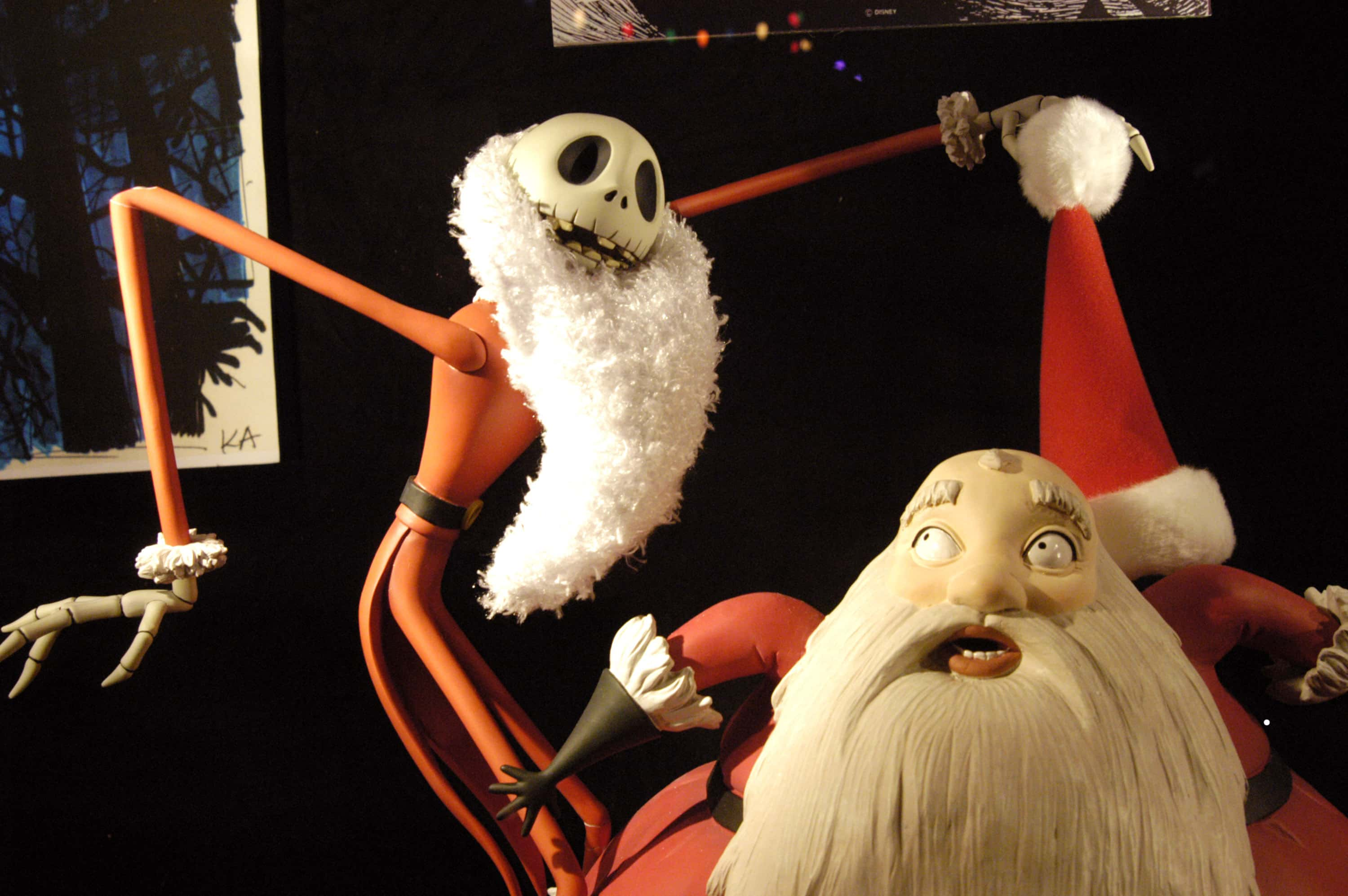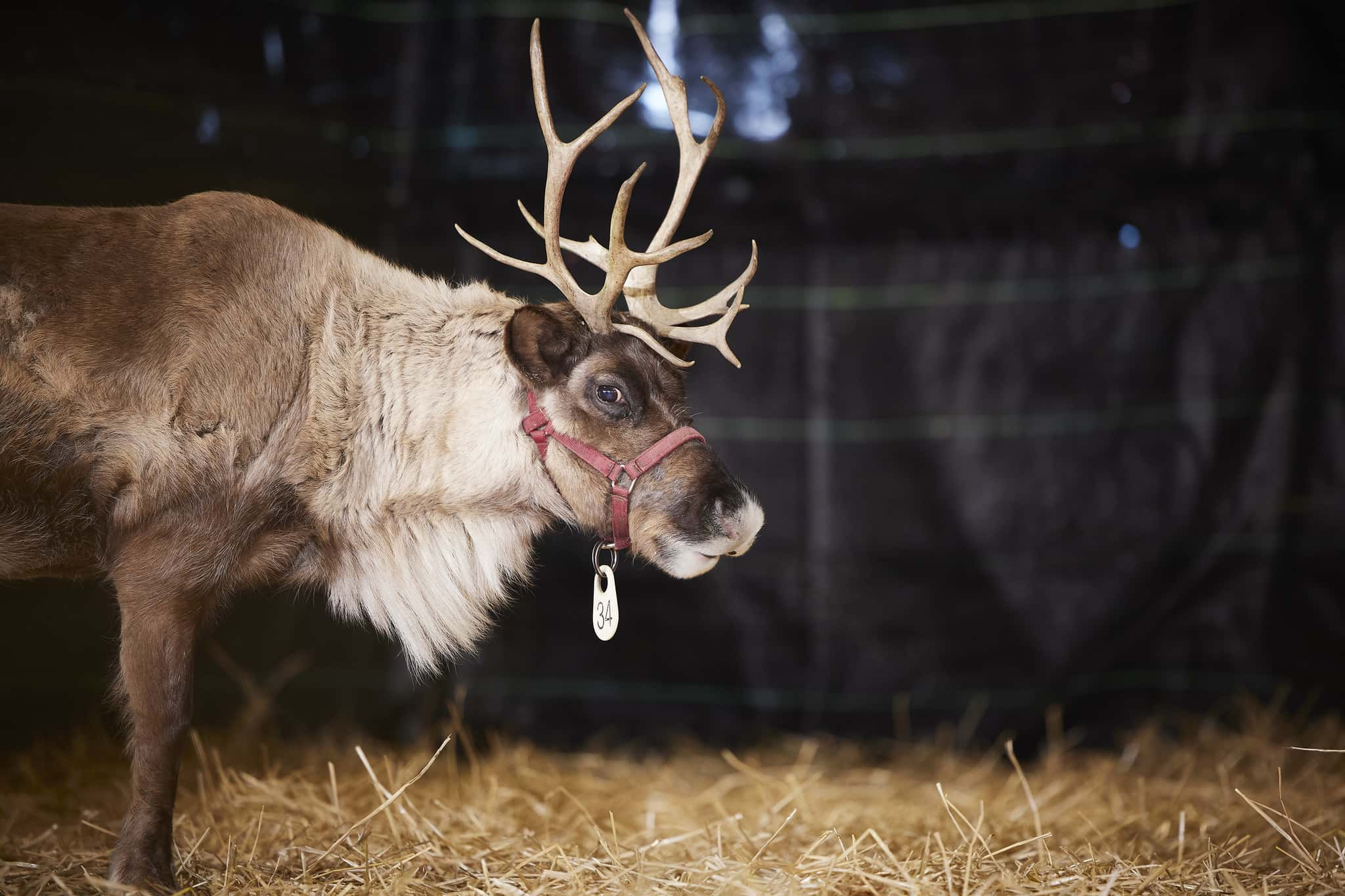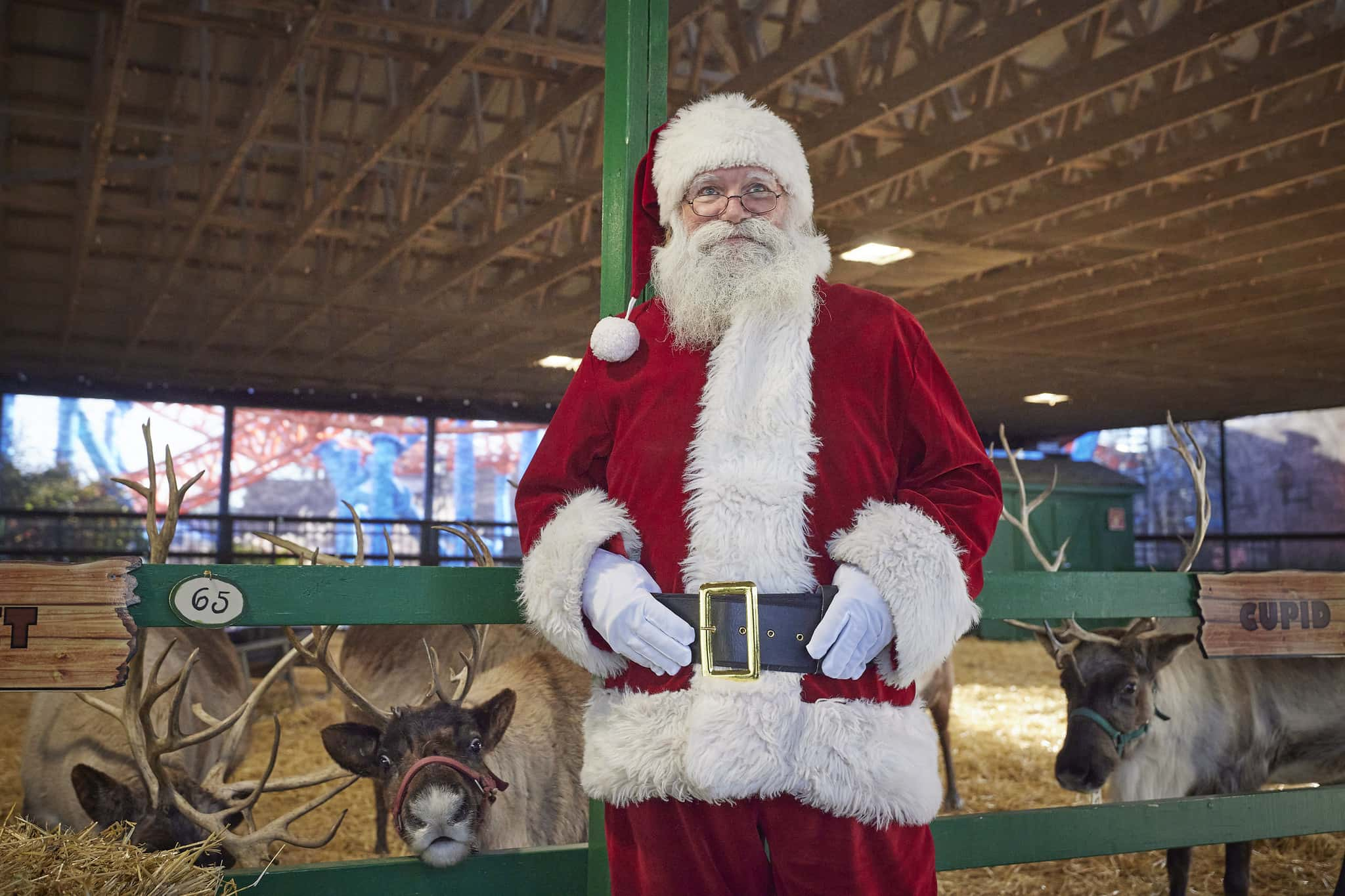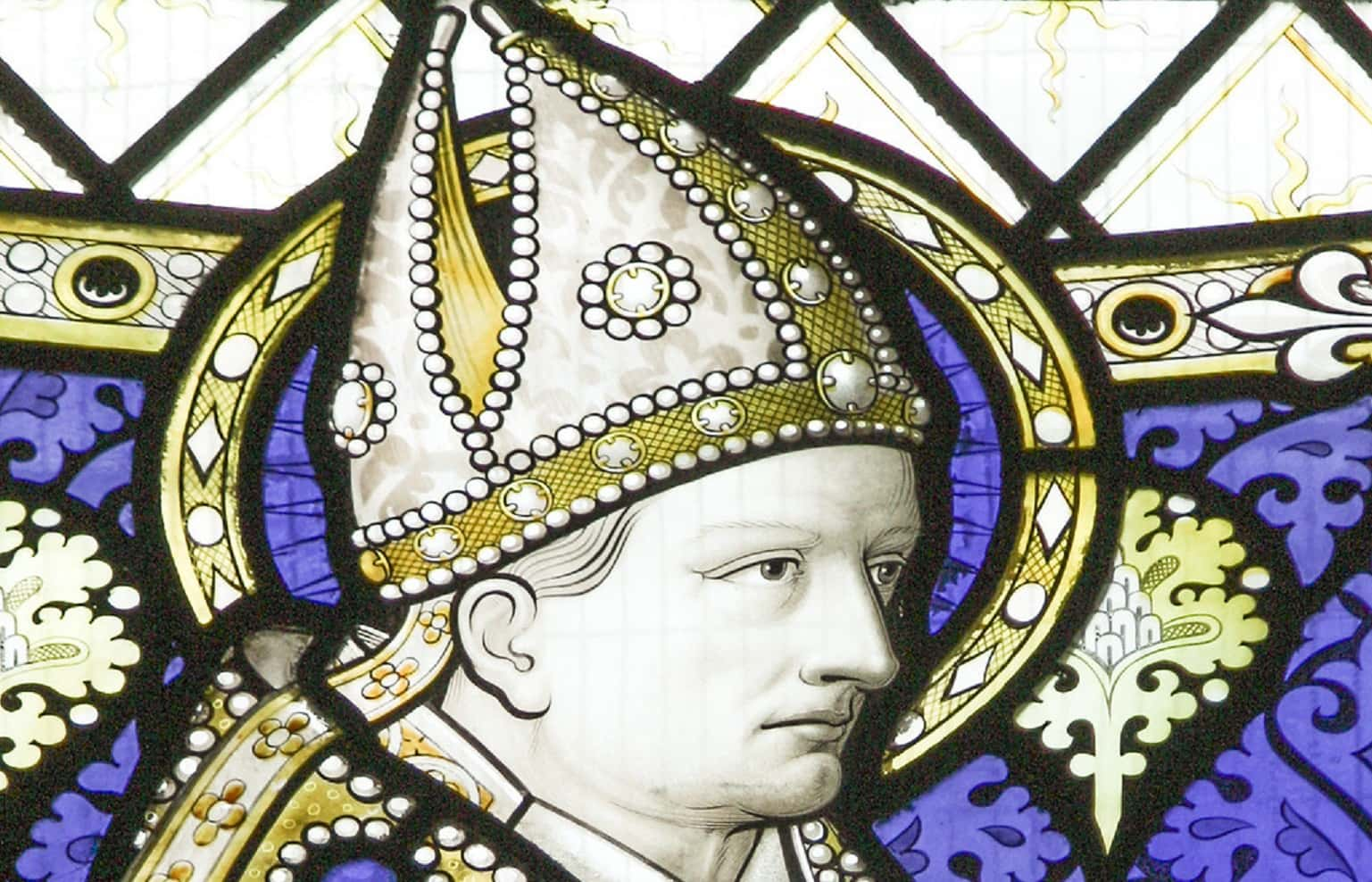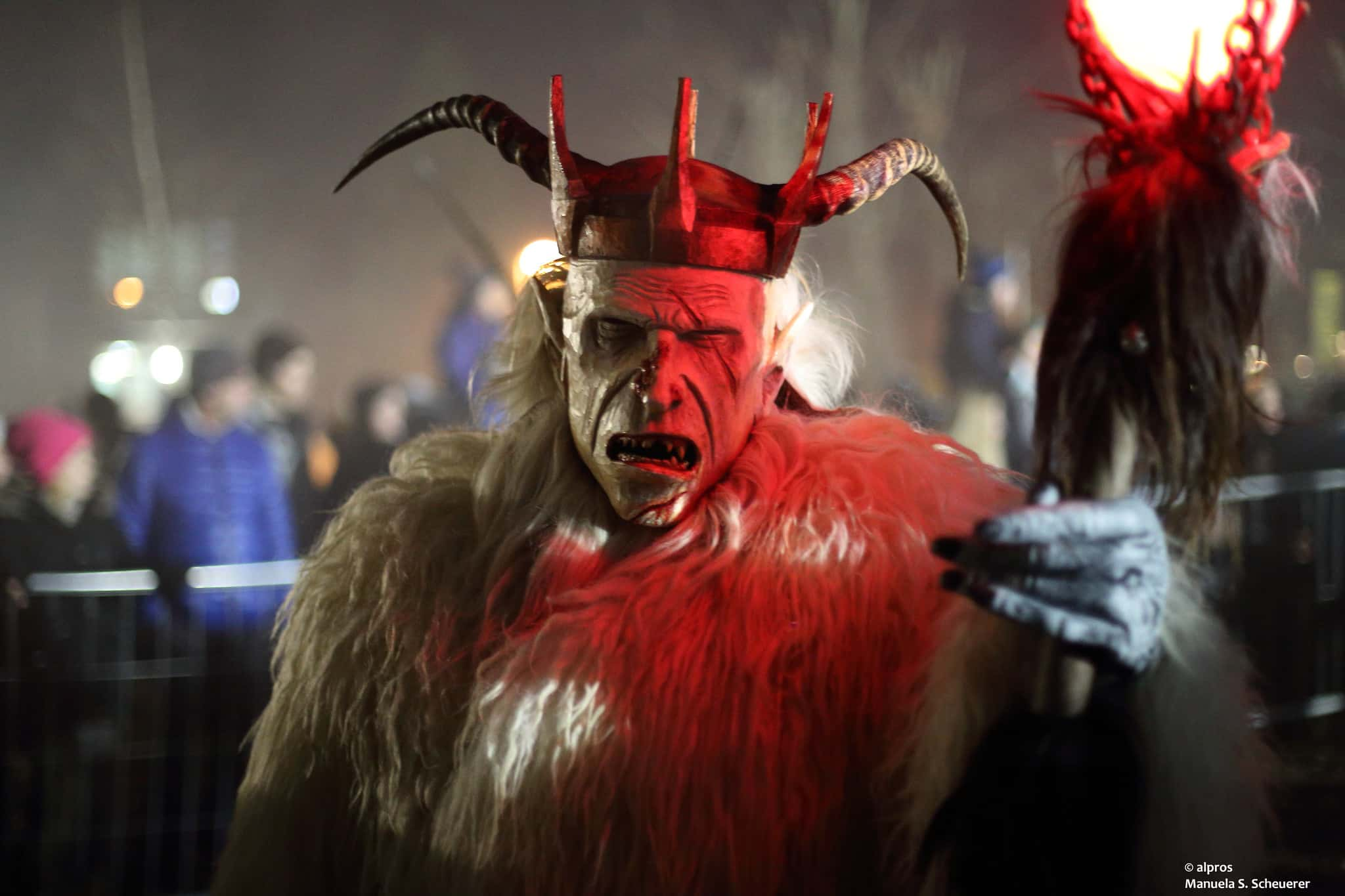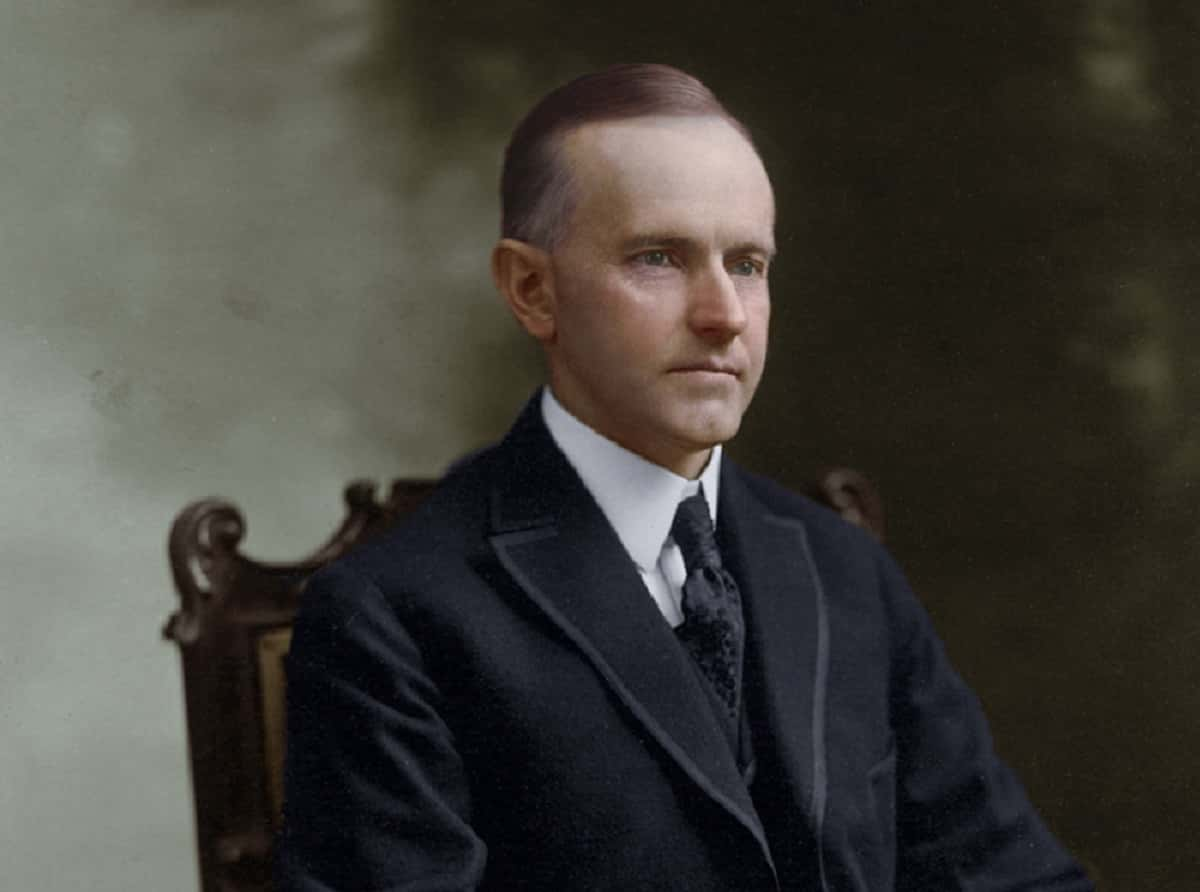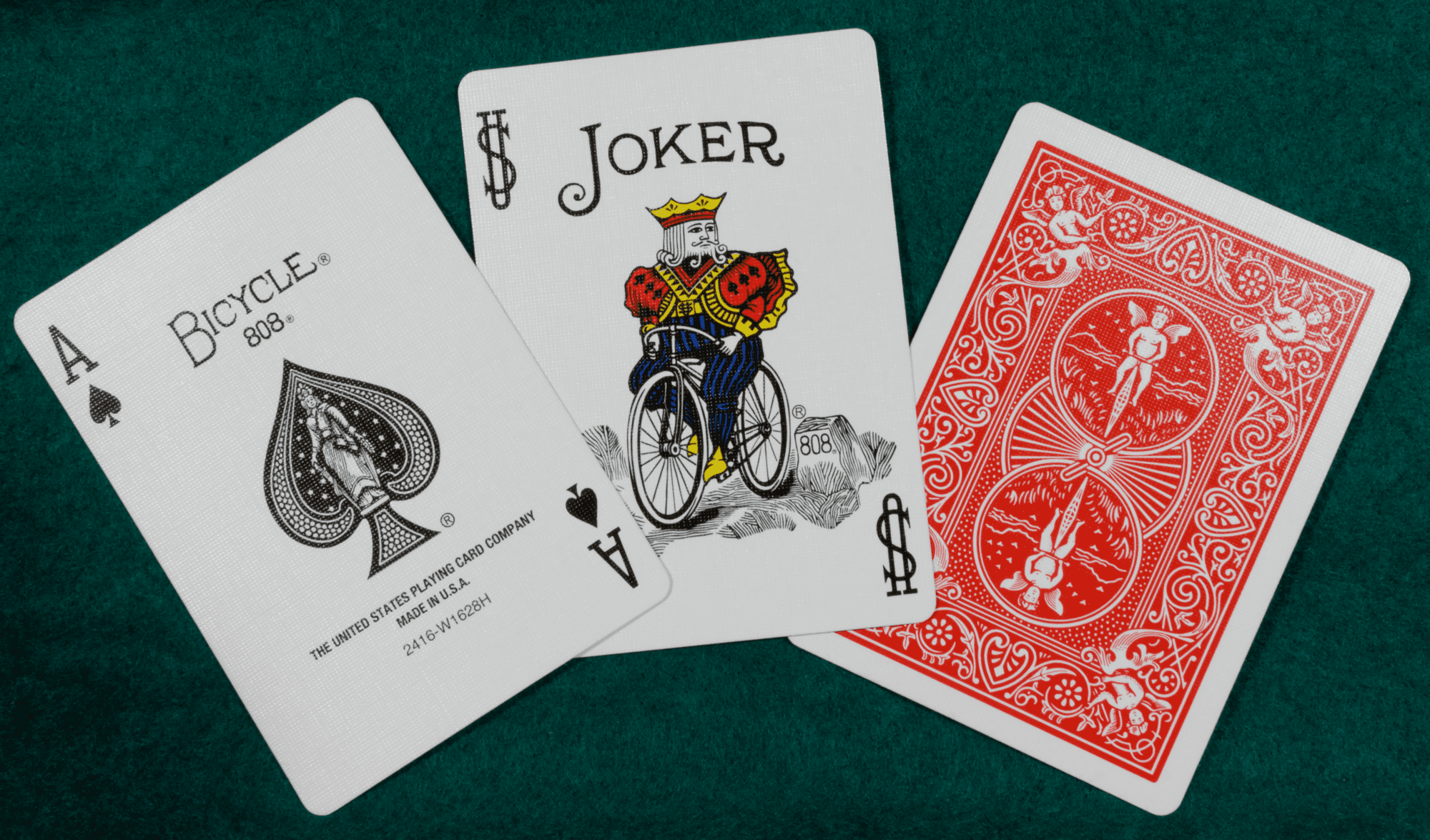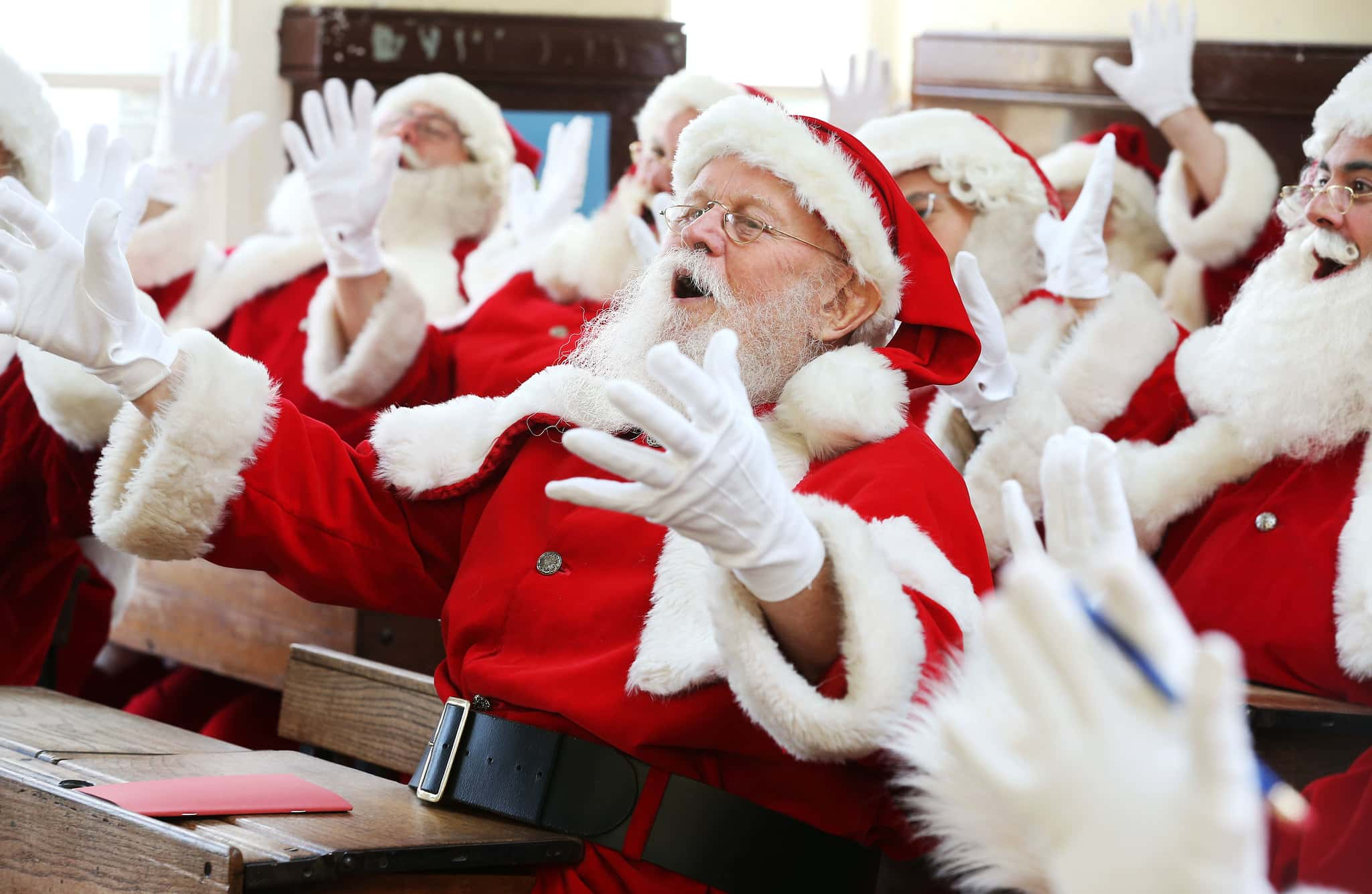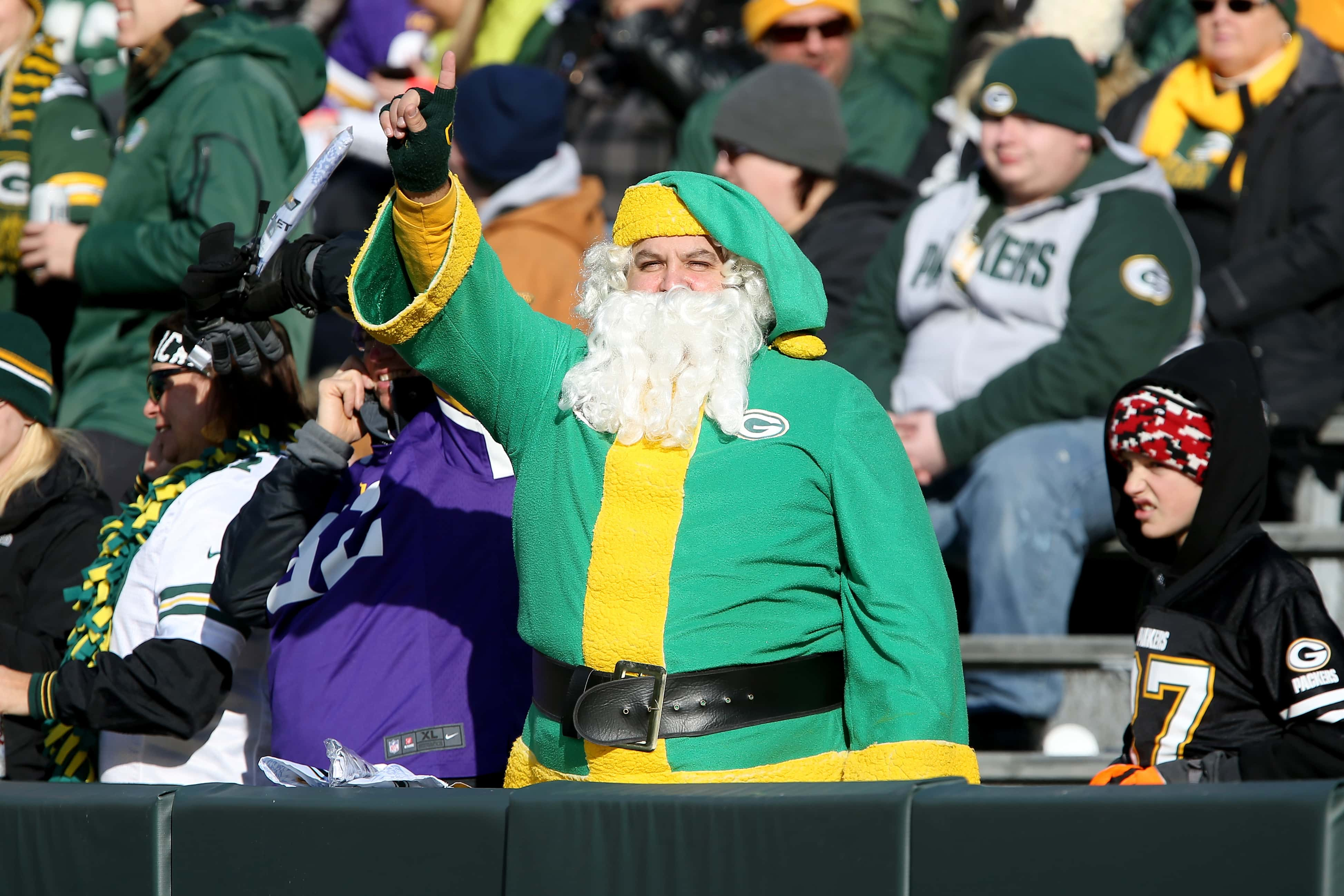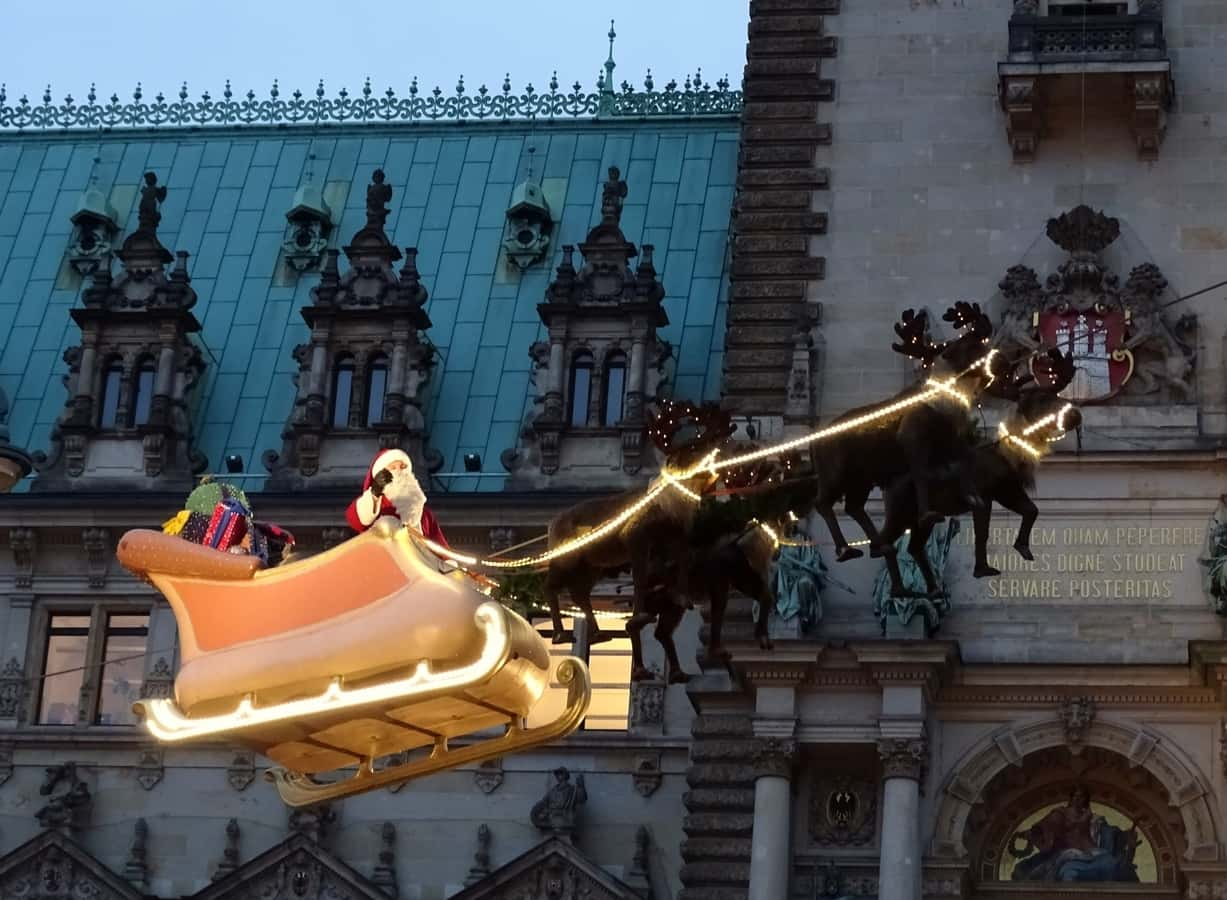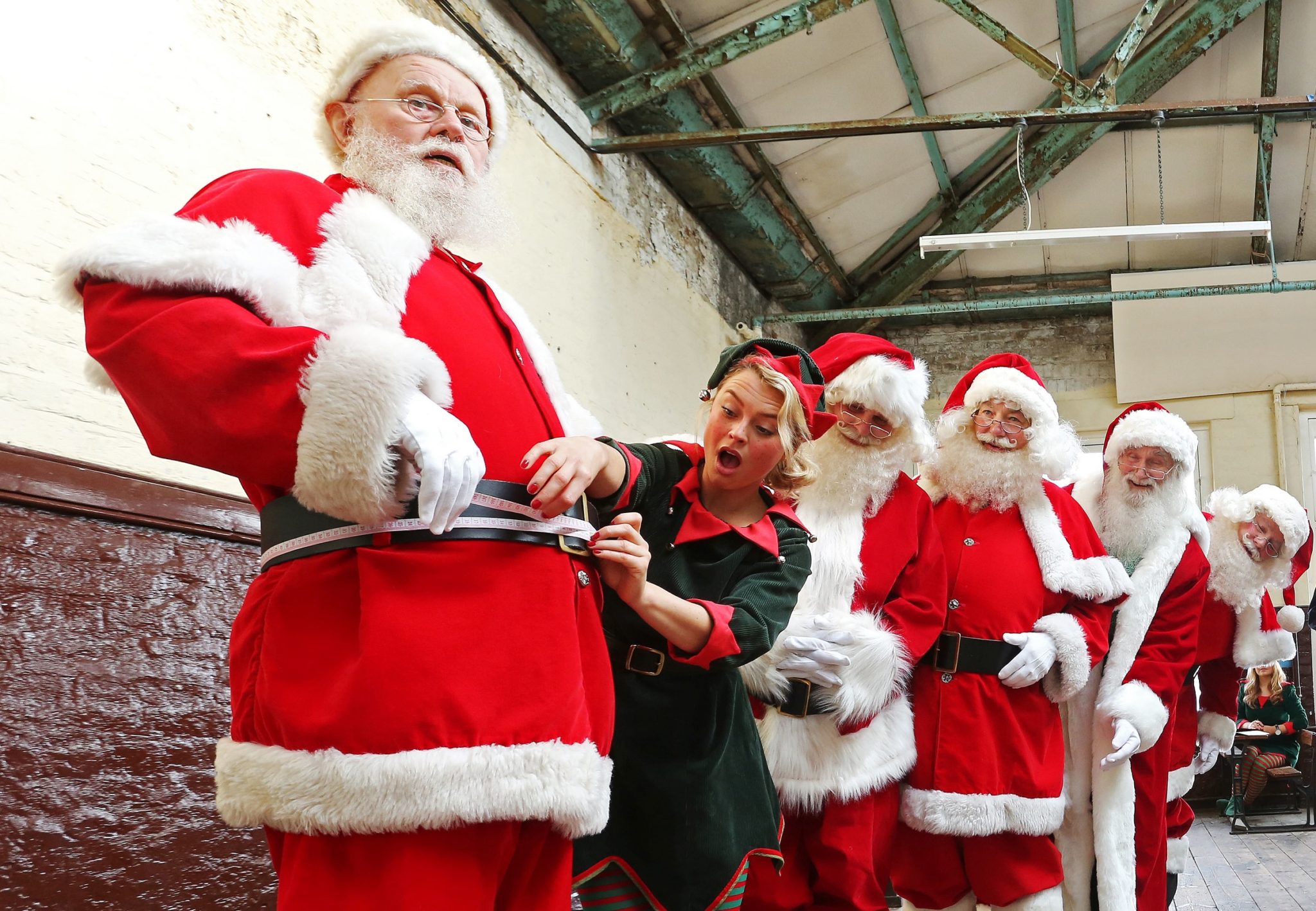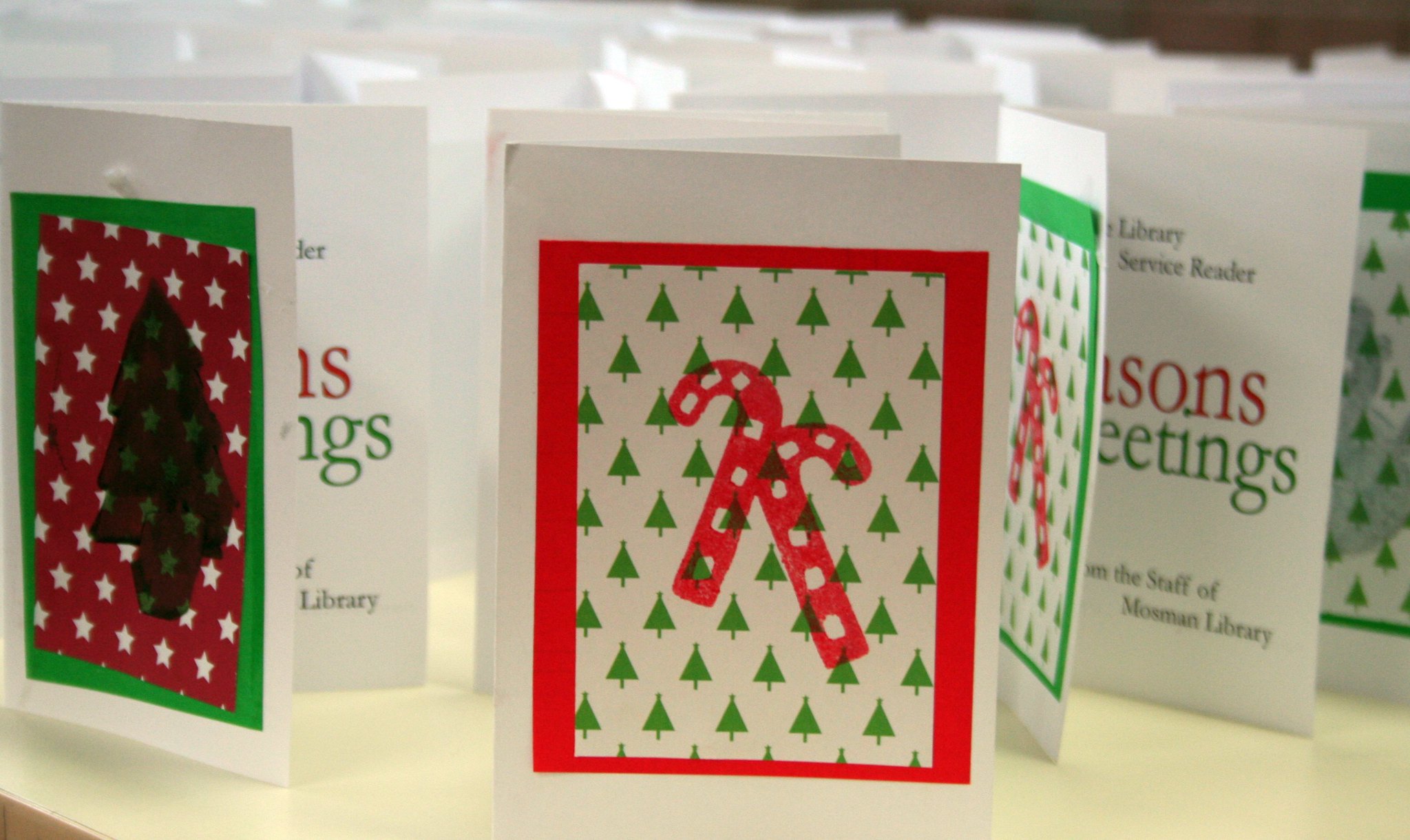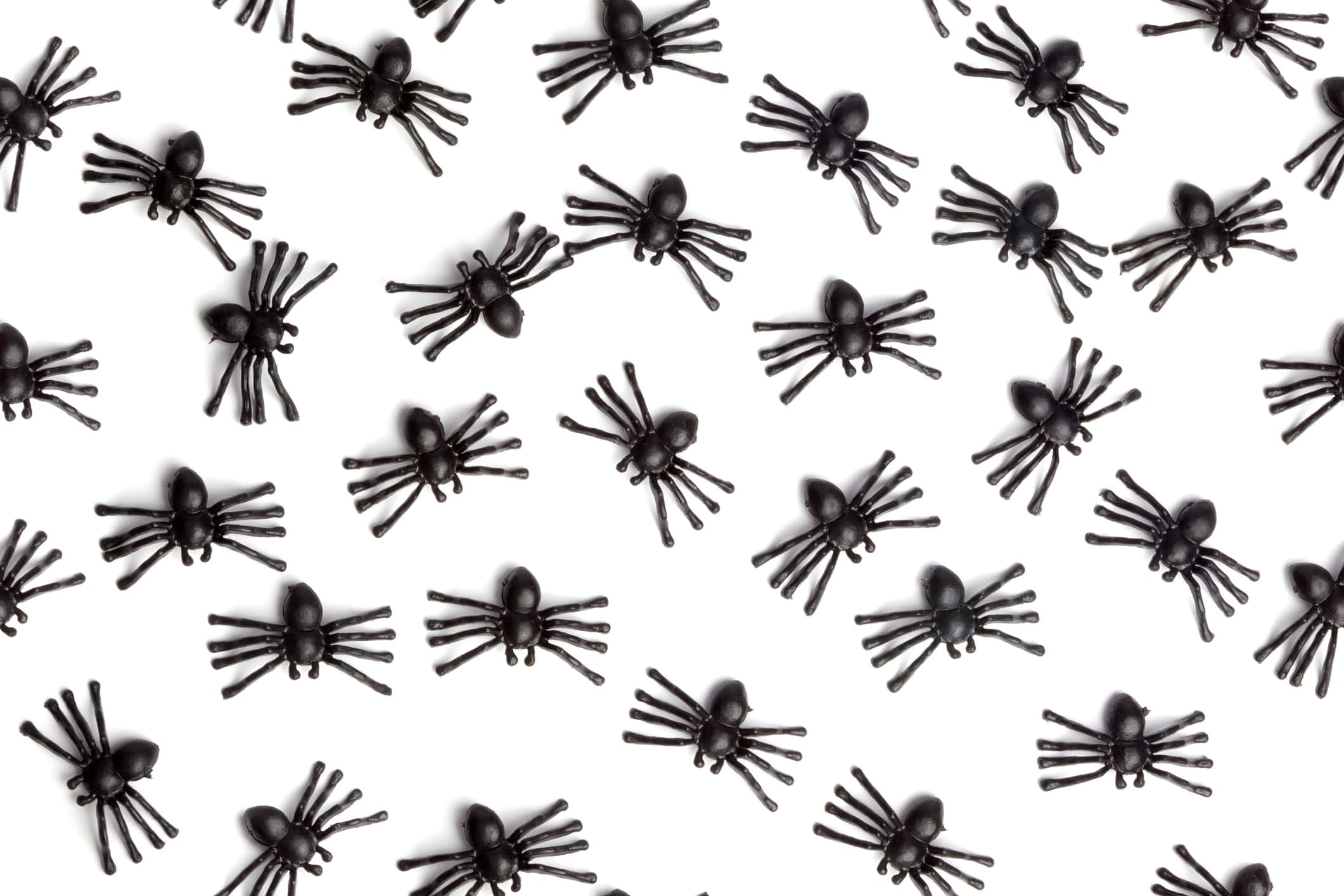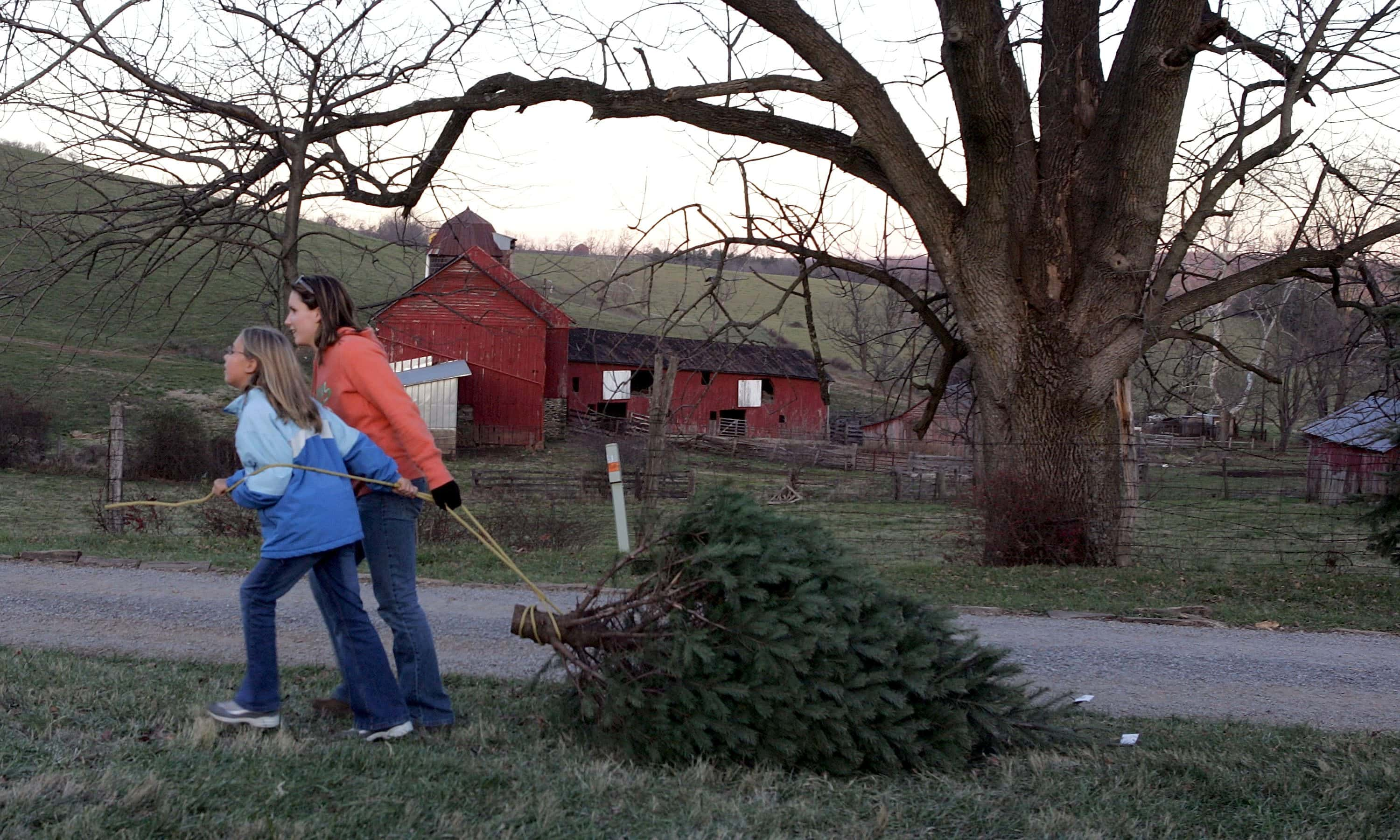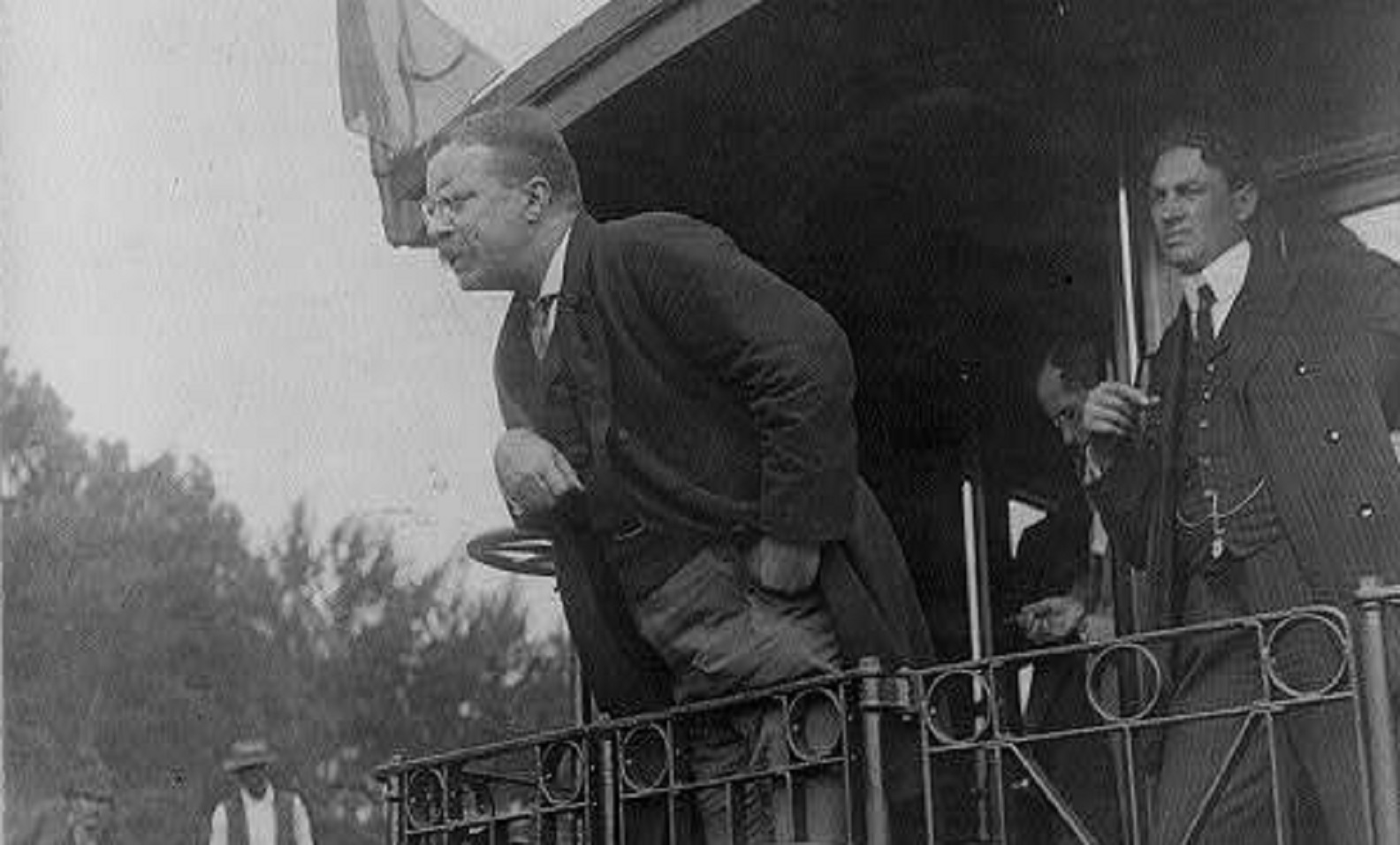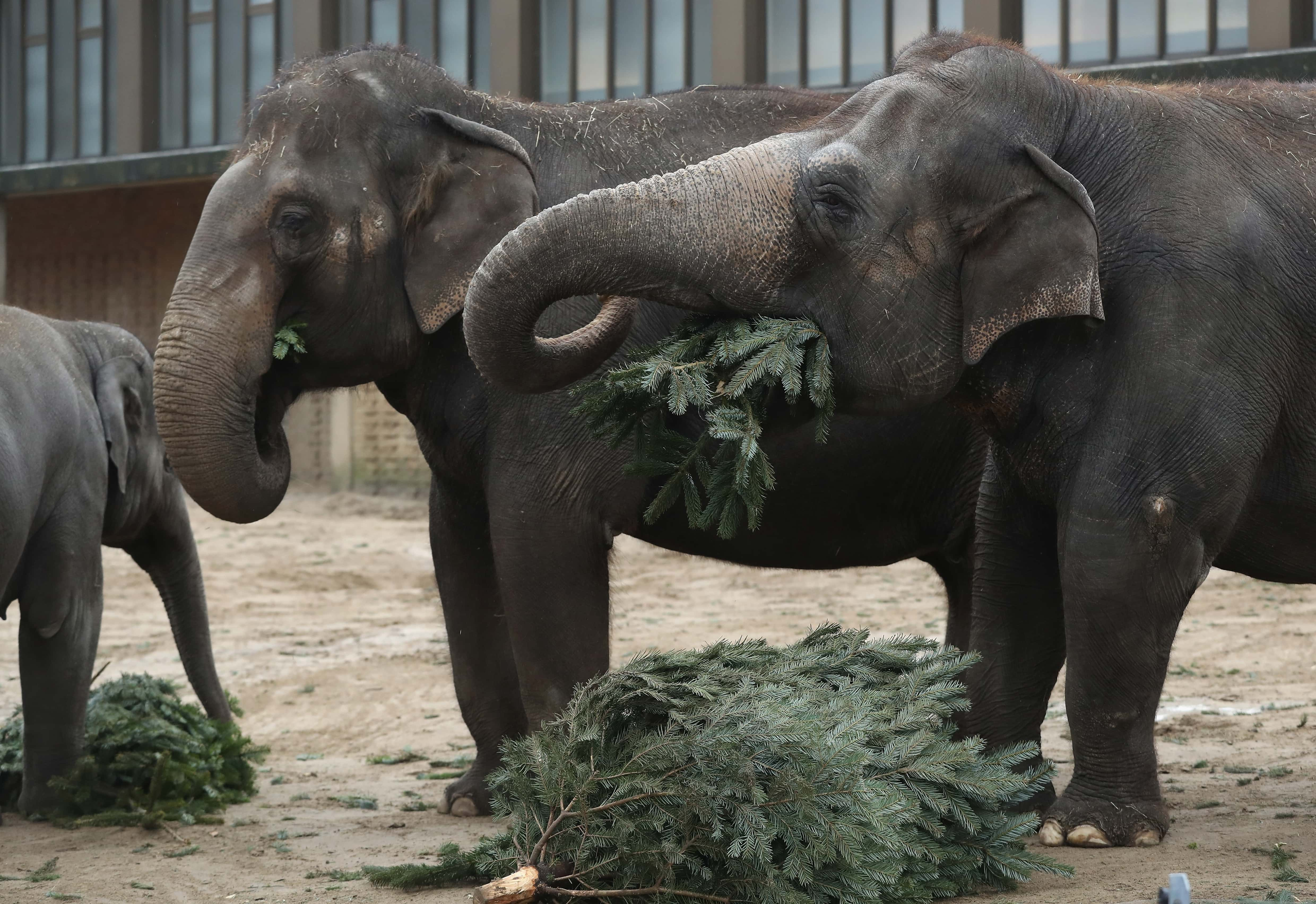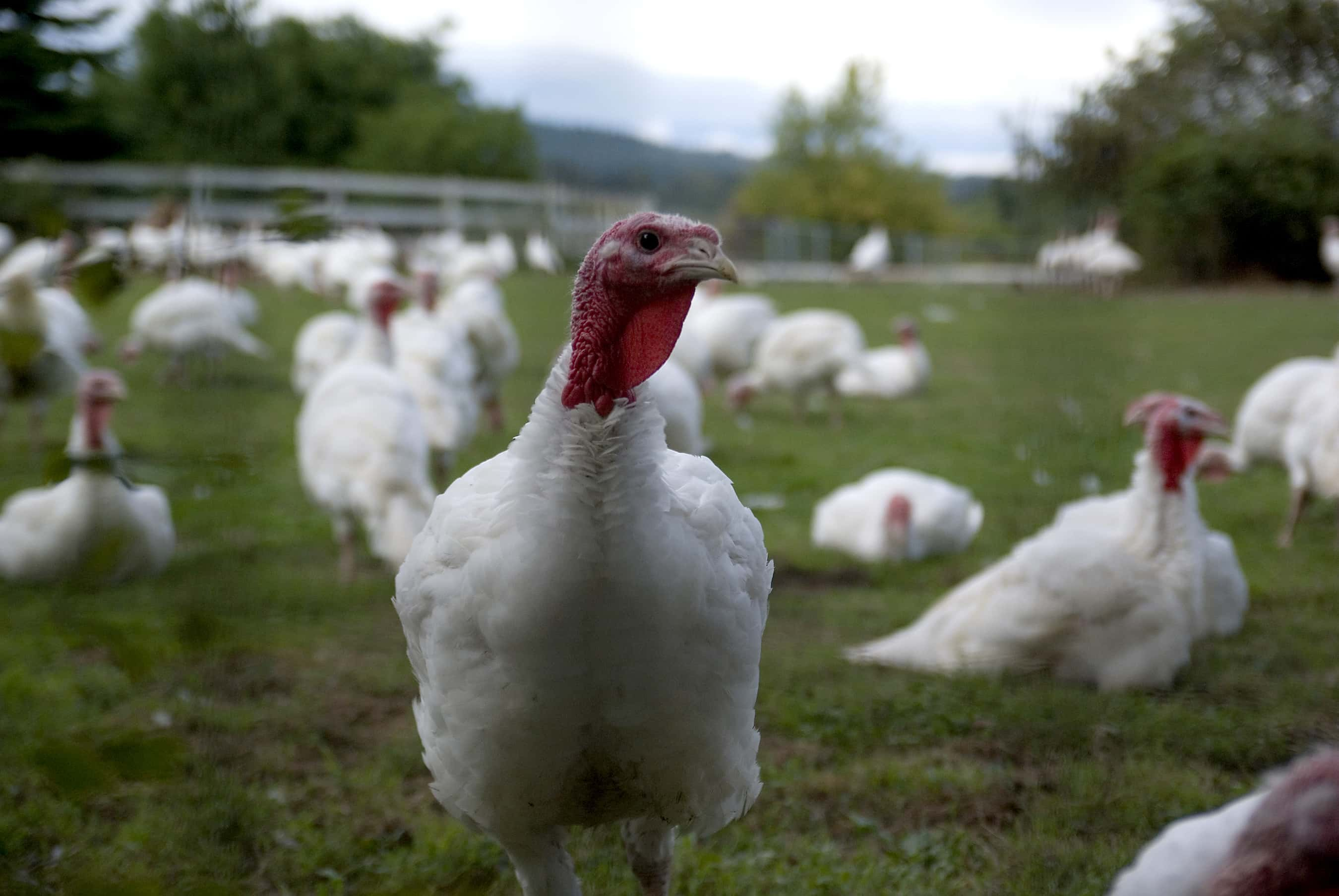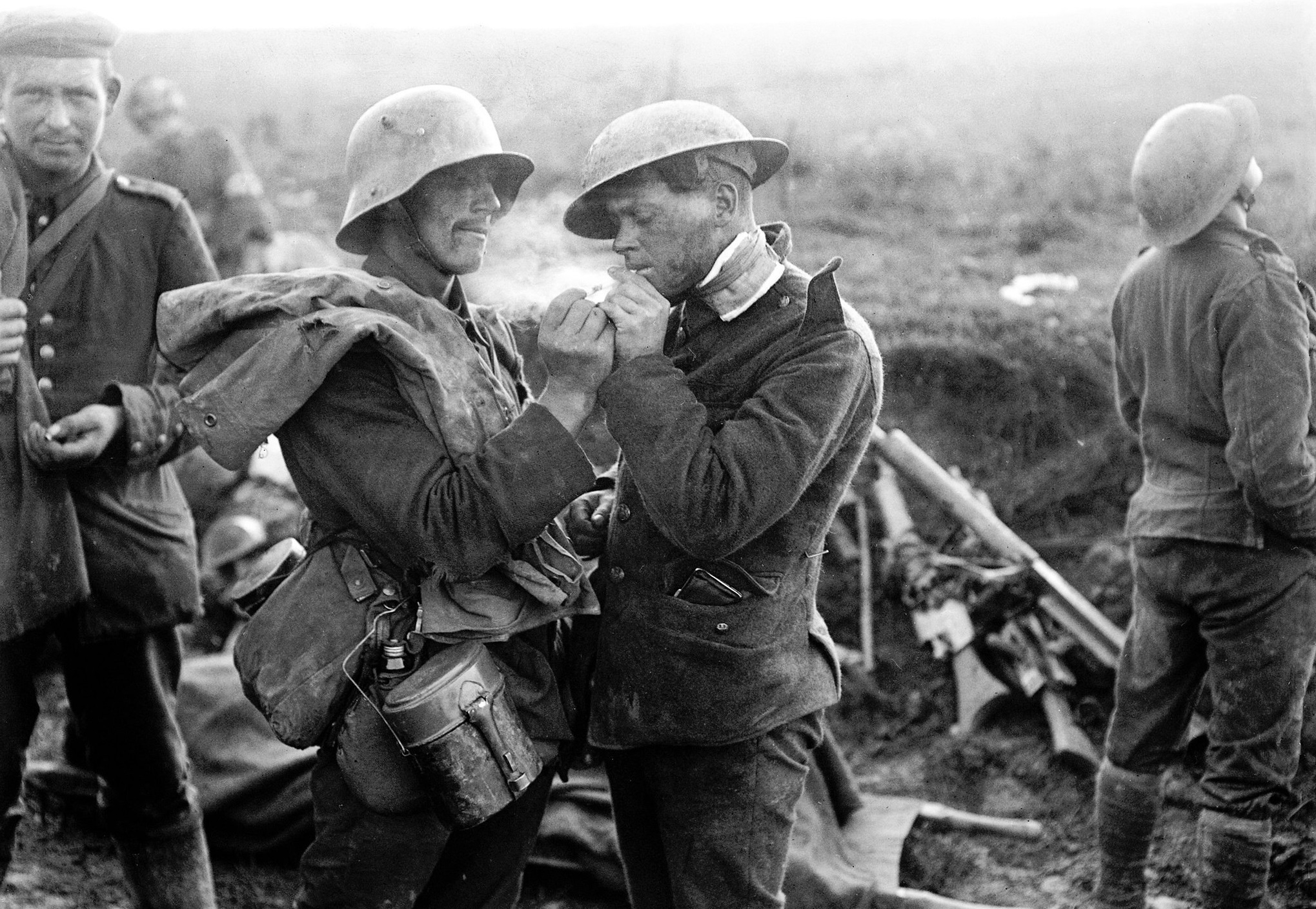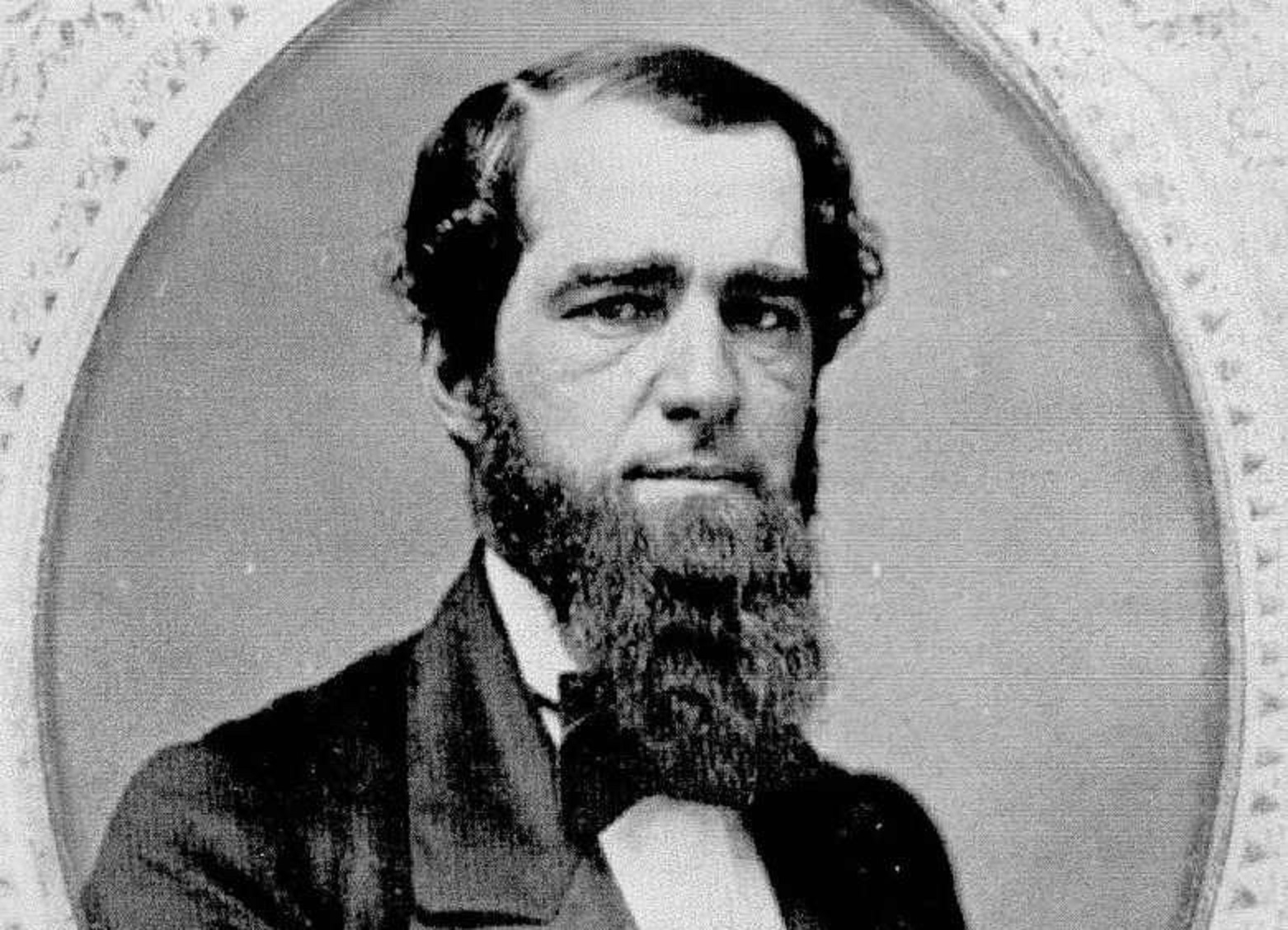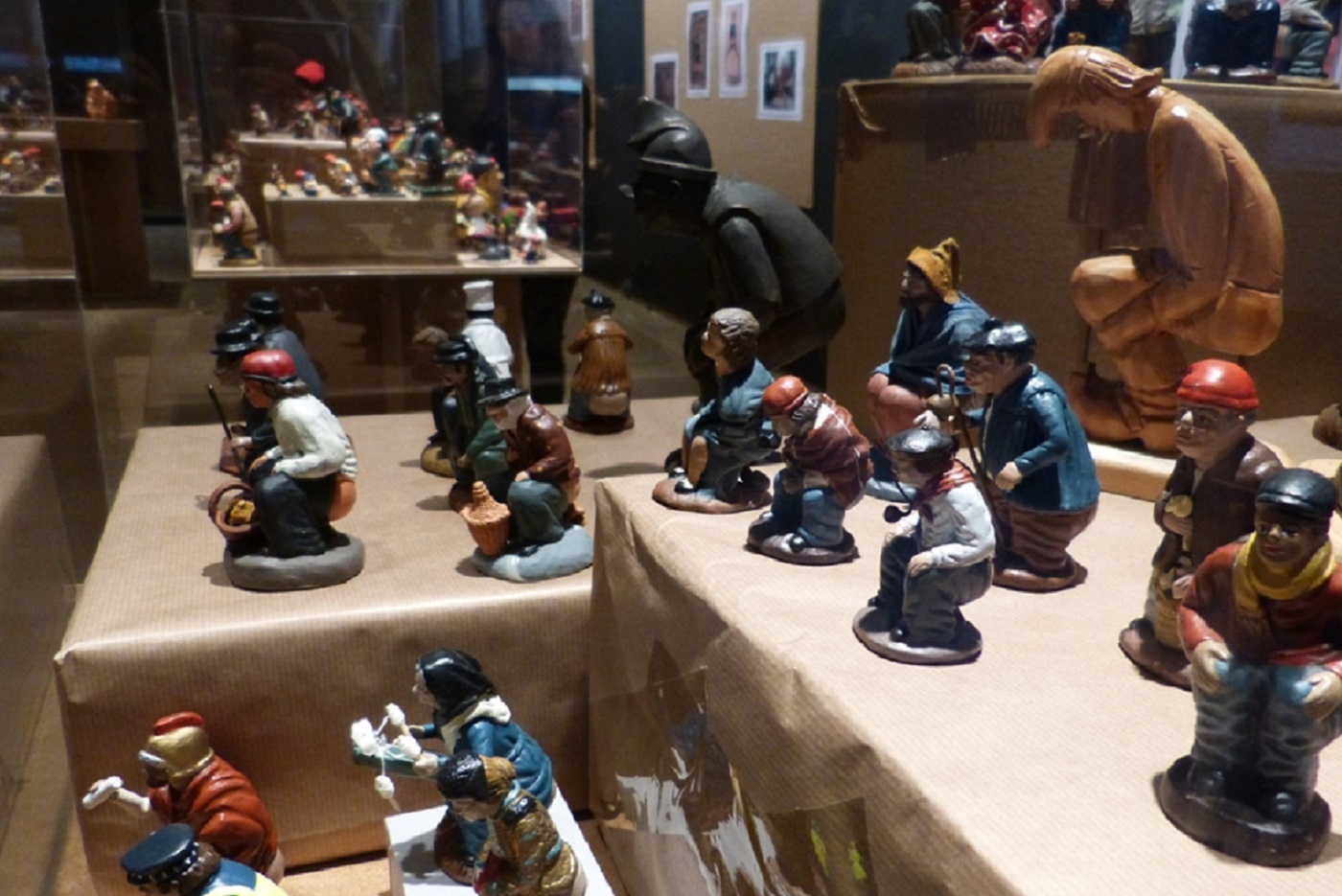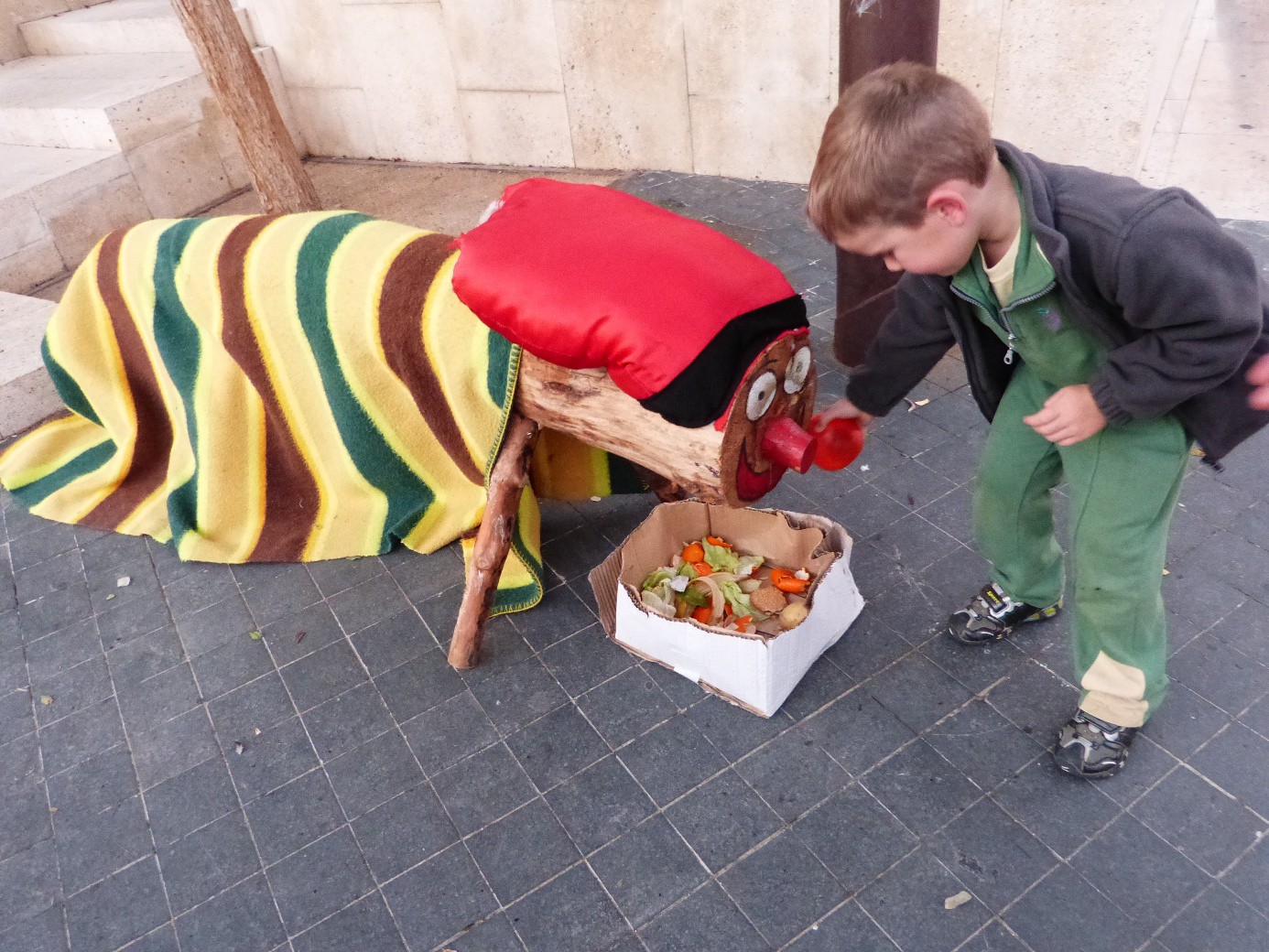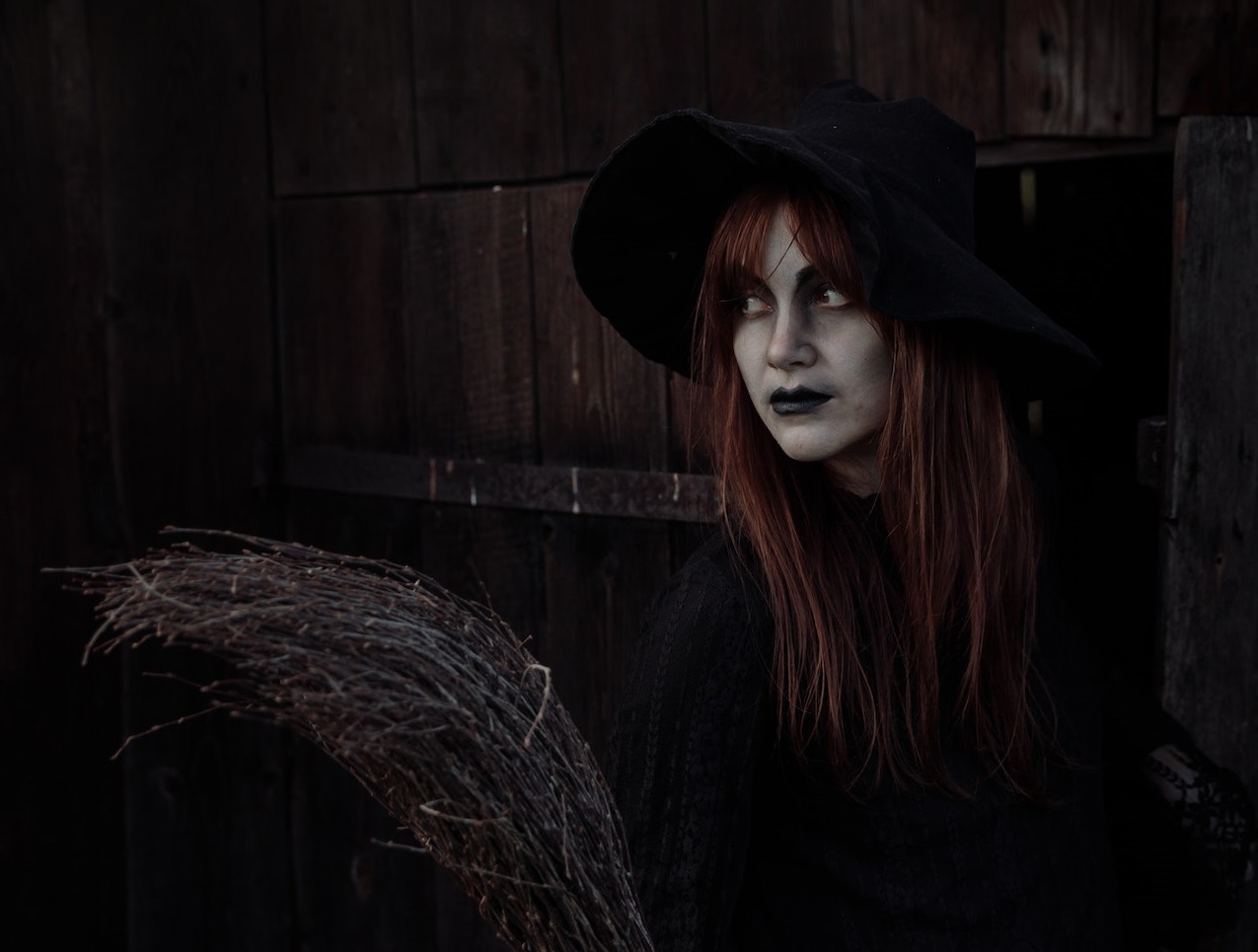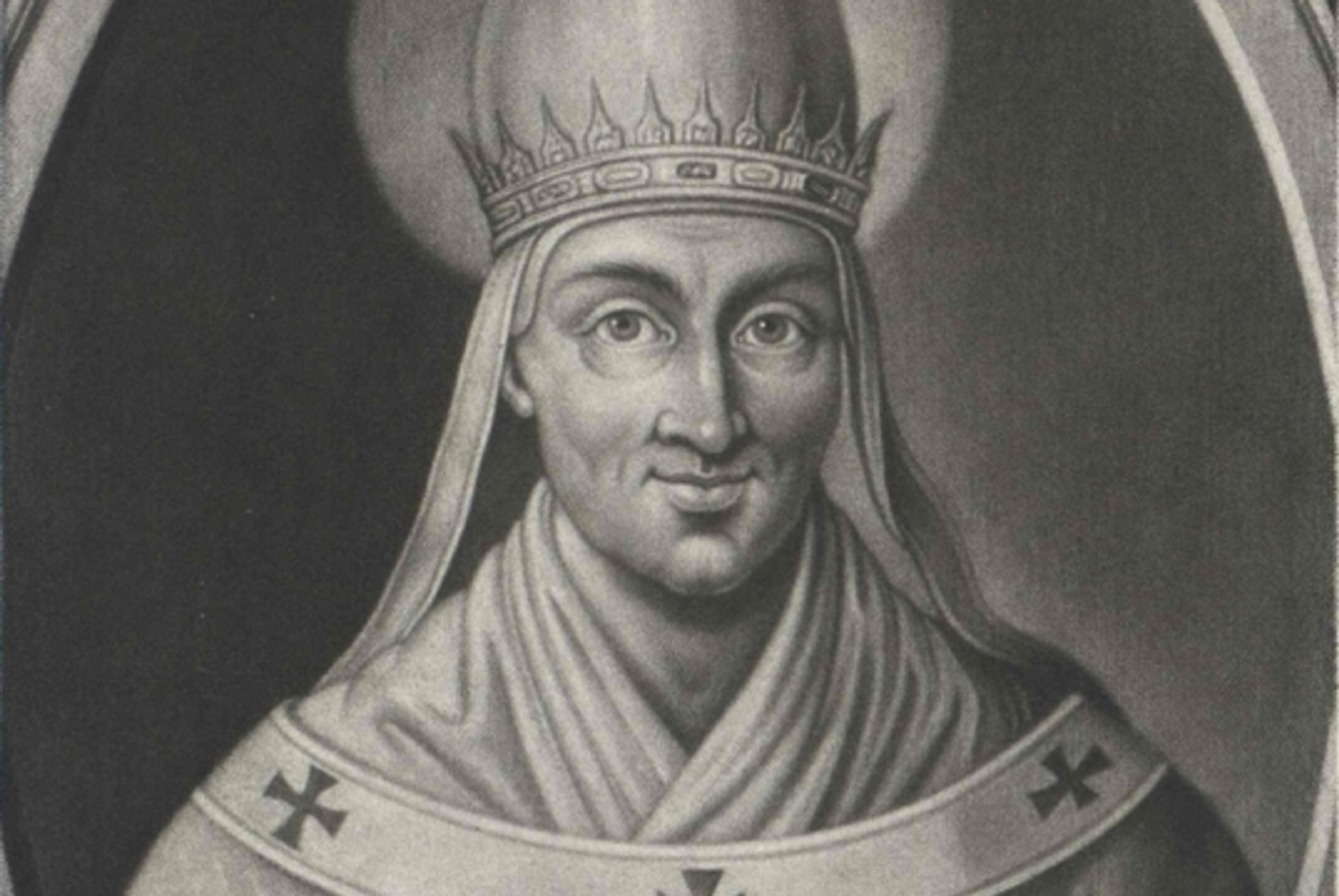Christmas is one of the most celebrated holidays around the world. For Christians, this day, usually December 25, is the religious celebration of the birth of Jesus Christ, but it has also been adopted by many non-Christians as the most wonderful time of the year for feasting, gift-giving, festive décor, and family time. Here are 60 festive facts about everyone's favorite holiday.
Christmas Facts
60. Family Sauna
Nothing says Christmas like getting naked with your family! In Estonia, it’s traditional for the whole family to take a sauna together on Christmas Eve before church.
59. Frisky Ferns
Bringing a whole new meaning to the tradition of kissing under the mistletoe, people used to believe that this plant was an aphrodisiac.
Mistletoe, now commonly used as a holiday decoration, was believed by the Druids to be a symbol of fertility and virility. On a slightly less arousing note, the name mistletoe comes from the Anglo-Saxon word mistletan, which translates essentially as “dung on a twig,” because the plant was commonly spread via bird droppings.
58. Ghosts of Christmas Past
It was a commonly held belief throughout Europe that both good and evil spirits were active during the “twelve days of Christmas”. Prior to the 1900s, there was a tradition of telling scary ghost stories on Christmas Eve.
Many think the idea of Santa’s elves evolved from these early beliefs, helped along by Clement C. Moore’s “A Visit from St. Nicholas,” more commonly referred to as The Night Before Christmas, which refers to Santa as “a jolly old elf”.
57. Dunder Who?
Moore’s poem was also the origin of Santa’s eight reindeer—named Dasher, Dancer, Prancer, Vixen, Comet, Cupid, Dunder and Blixem. (The last two are German words for thunder and lightning, and later were changed to Donner and Blitzen).
56. Antler Reveal
There is a little gender confusion regarding Santa’s reindeer. While most of their names sound male, male reindeers shed their antlers around Christmas. Somehow, Santa’s reindeer keep their antlers all year round.
55. He Was a Real Guy
The origins of Santa Claus actually trace back to a real person: St.
Nikolas of Myra, who was also known as Nikolaos the Wonderworker, Bishop Saint Nicholas of Smyrna, and Nikolaos of Bari. He lived in what is now modern-day Turkey around 280 AD, and has become the most well-known saint who was not associated with the Bible.
As a bonus fact, he also happens to be the patron saint of children, sailors, orphans, royalty, as well as the city of New York!
54. Slight Change of Plans
One of the most popular legends surrounding the original Santa is that he saved three sisters from a life of sex work and simultaneously created the origins of modern-day Christmas stockings.
These three sisters were too poor to afford a marriage dowry, but one night, good ole St. Nick dropped a bag of gold down their chimney so that the eldest could wed.
According to the story, it fell into one of their stockings that was left out to dry by the fire—because you certainly couldn't get married with (gasp) wet gold.
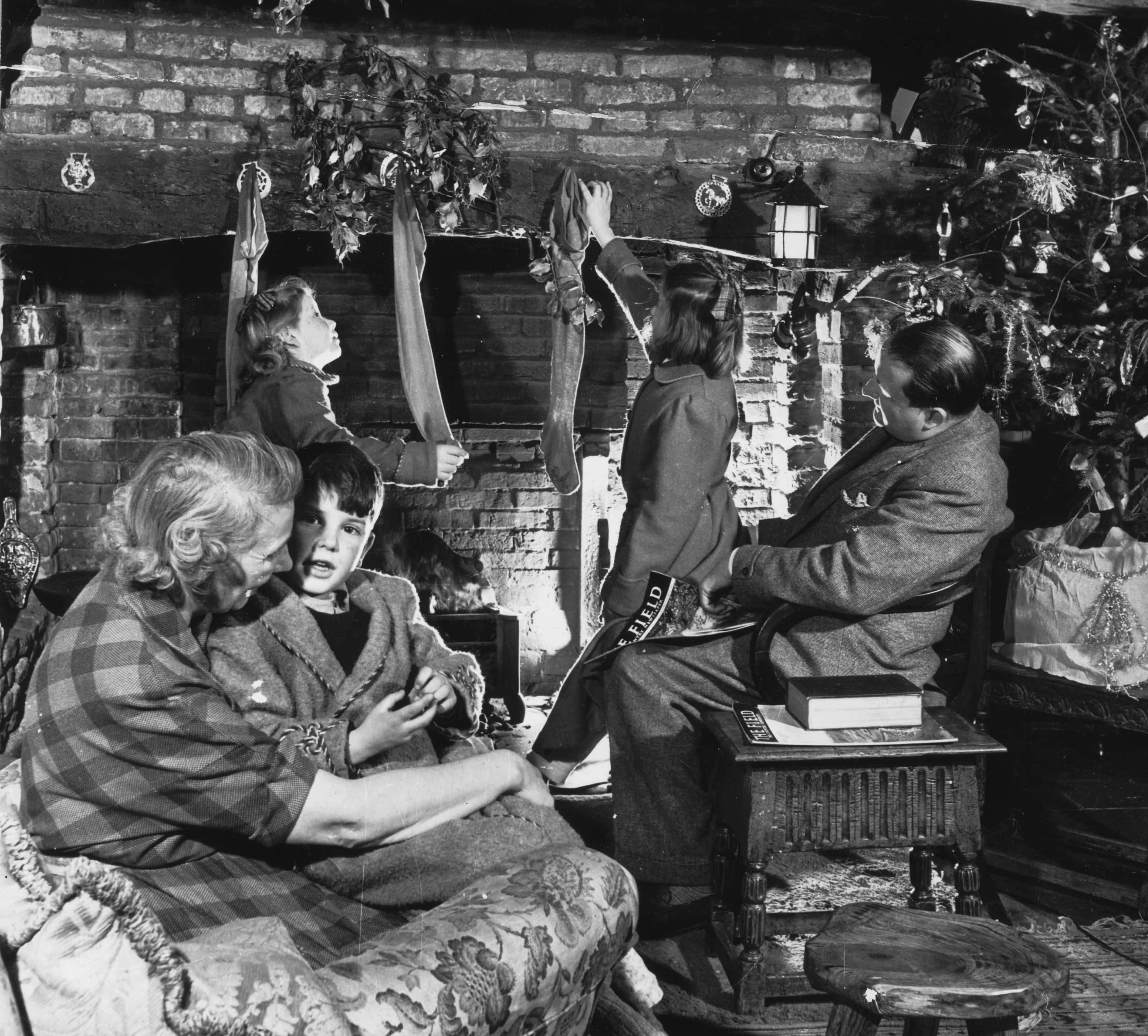 getty images
getty images
53. This is the Stuff of Nightmares
Not all the figures who have been associated with St.
Nick over the years have been jolly. Krampus is a character that some European cultures believe in. According to legend, Krampus visits houses with St. Nicholas. The name originates from the German word krampen, which means “claw,” and he is supposedly the son of the Norse god of the underworld.
While the charitable St.
Nick gives gifts to the good kids, Krampus is there to punish the naughty ones, who according to folk tales, are beaten, kidnapped, or even eaten! Just saying, but this punishment seems like an extreme step up from coal.
52. Oh, the Christmas Tree!
On a less sinister note, the Germans are also credited with the creation of the tradition of Christmas trees.
While evergreen branches had long been seen as a reminder of springtime during the long winter months, it was the Germans who first brought them inside to be decorated. This tradition became internationally popularized after Germany’s Prince Albert introduced it to England in 1846 when he married Queen Victoria.
The couple was pictured in front of a tree in 1848, and the tradition took off after that.

Sign up to our newsletter.
History’s most fascinating stories and darkest secrets, delivered to your inbox daily. Making distraction rewarding since 2017.
51. The White House
Historians have been unable to determine who the first president was to bring a tree into the White House. It was either Franklin Pierce in 1856 or Benjamin Harrison in 1889, though it is known that President Calvin Coolidge started the White House tree lighting ceremony in 1923.
50. Religious Symbolism
The plants of Holly and Ivy have been used inside homes as decoration as far back as the 9th century, representing Christian notions of everlasting life.
The red berries symbolize the blood of Christ and the holly, his crown of thorns.
49. England without Christmas….
While today we associate much of our Christmas traditions with Victorian England, the country was not always a fan of the holiday. Oliver Cromwell, a Puritan dictator of the British Isles in the mid-17th century, passed a law in parliament that made Christmas illegal.
Apparently, he thought it was immoral to be partying so hard on such a holy day.
It wasn’t until Cromwell lost power in the 1660s that the ban was lifted.
 Flickr, Ann Longmore-Etheridge
Flickr, Ann Longmore-Etheridge
48. Top Secret
During the Second World War, the well-known American playing card company “Bicycle” joined up with US and British spies to create cards that revealed an escape route for Prisoners of War in between the layers of paper. Sent in as part of Christmas care packages, these secret messages slipped right past Nazi censors to captured personnel in Germany.
47. About Time
It wasn’t until well after the Revolutionary War that some American states declared Christmas a legal holiday, with Alabama being the first state in 1836. It didn’t become a federal holiday until after the Civil War, in 1870. The last state to adopt the holiday was Oklahoma in 1907.
 Flickr, Land Between the Lakes KY/TN
Flickr, Land Between the Lakes KY/TN
46. Or Maybe Not?
About 15,000 people end up in the ER each year due to Christmas-related accidents. If that wasn’t bad enough, fires caused by Christmas trees cause an average of seventeen deaths and millions in property damage annually.
 Flickr, In Memoriam: Steve Burt
Flickr, In Memoriam: Steve Burt
45. Last Christmas I Gave You My Heart
One of the most popular times of the year for break-ups (according to Facebook) is in the two weeks leading up to Christmas.
Maybe it’s the stress of the season or realizing you don’t want to buy your significant other a gift! Interestingly, Christmas Day is the least common day to end a relationship.
 Freepik,mdjaff
Freepik,mdjaff
44. Rent-A-Santa
Every year, the United States has about 20,000 dress-up Santas. In fact, there are several ‘Santa Schools’ that teach individuals how to be a good Santa. The schools, the first of which opened in 1937, give advice on being jolly, dealing with children (and their parents), and also practical tips such as avoiding bad-breath foods before work.
43. Kosher Christmas
Most of the Christmas songs that are popular today are actually written/co-written by Jewish people, including “I’ll be Home for Christmas,” “Winter Wonderland,” “Chestnuts Roasting on an Open Fire,” “Rudolph the Red-Nosed Reindeer” and the best-selling single of all time (not just best-selling Christmas song), “White Christmas” by Irving Berlin.
This song, originally sung by Bing Crosby in the film Holiday Inn (1942), has had many versions over the years. Berlin hated Elvis Presley’s version so much that he tried to prevent radio stations from playing it.
42. The Most Famous Reindeer of All
Rudolph the reindeer was originally created in 1939 by copywriter Robert L.
May as a promotional tool for the Chicago department store, Montgomery Ward. In those days, a red nose was seen as a sign of chronic alcoholism, which made the store owners nervous about the idea. They eventually agreed after May took them to see the reindeer at the Chicago Zoo.
41. One Heck of a Sponsorship Deal
Santa’s iconic red suit wasn’t always red. Prior to the 1930s, it was often pictured as white, green, or blue. Thomas Nast (the illustrator of Moore’s “A Visit from St. Nicholas”) depicted Santa with a red coat in the late 19th century, and this inspired illustrator Haddon Sundblom in 1931 when he was tasked with creating advertisements for Coca-Cola.
He depicted Santa as the red-suited, white-haired, and rosy-cheeked man that we all know and love today.
40. Not the First
Contrary to popular belief though, it wasn’t Coca-Cola who first used the red-coated Santa for advertising. Prior to Coke, White Rock Beverages sold their mineral water using a red and white Santa in 1915.
39. Santa Detected
On December 24, 1948, the United States Air Force issued a bizarre statement. It stated that they had detected "early warning radar net to the north: one unidentified sleigh, powered by eight reindeer, at 14,000 feet, heading 180 degrees". The Associated Press published articles passing this "report" along to the general public.
This marked the first time that the United States Armed Forces issued a statement about tracking Santa Claus on Christmas Eve.
On Christmas Eve this year, you can call the United States Airforce to receive an update on Santa’s location.
38. Strange Relations
The same guy who created the Headless Horseman (Washington Irving) is also credited with the idea of Santa Claus’s flying sleigh.
37. Christmas Physics
There are approximately 2 billion children under 18 around the world according to the United Nations Children’s Fund (UNICEF). Given this, along with an average of 2.
5 children per household, Santa has about 800 million stops to make on the night of Christmas Eve and needs to travel a total distance of 221 million miles to do so. Seems totally doable, right?
Slight problem…to make all of his stops, his acceleration between each would be at a rate of 12.19 million miles/second, and the force of this would essentially crush/flatten/scramble Santa to death.
36. A Visit from “Meat Hook”
The people of Iceland may have found a way around this problem. According to them, there are 13 Santas that operate in the country. Starting on December 12, they come down the mountain one by one to each leave a gift for the children there. If this doesn’t sound awesome enough, the Santas also have names like Meat Hook, Door Sniffer, and Spoon Licker.
35. Canadians are Clever
In Canada, Santa has his own zip code.
As part of a special letter-writing program to support literacy, the Canadian Post Office started answering the letters that they received each holiday season. They ended up getting so many that they set up this special postal code: H0H 0H0.
34. Season’s Greetings
In the U.S. more than 3 billion Christmas cards are sent every year.
In case you’re curious, the record for the most number of Christmas cards sent in a year by a single person is 62,824. Where do you find the time for that?
33. X Marks the Spot
If you’re looking for a short-cut on your Christmas cards this year, don’t feel bad about using the “X-mas” abbreviation. The name Christmas is technically a contraction of “Christ’s Mass”. X is the first letter of Christ in Greek, and for hundreds of years, it was used as a stand in for the word as a whole.
So, writing X-mas isn’t being lazy at all!
It has been an accepted abbreviation since the mid-1500s.
32. Merry Hitler-Eve Everyone
Speaking of taking the “Christ” out of “Christmas,” the Nazis not only wanted to make Christmas non-religious, but also tried to re-brand it as a celebration of the rise of Hitler. Some examples of this included Saint Nicholas being replaced by a “Solstice Man” and instead of stars or angels, they advocated putting swastikas on top of their Christmas trees. Yikes.
31. These Aren’t for Halloween?
Spiders (yes, you read that right) are common as Christmas tree decorations in Poland because, according to a legend, a spider wove a blanket for baby Jesus.
30. That’s What They Call a Win-Win
The first artificial Christmas trees, which date back to the late 1800s, were made in Germany out of dyed goose feathers.
Later, the creators of toilet brushes realized that their machinery could create pine-like branches that looked just like real trees, were less flammable, and could hold more decorations.
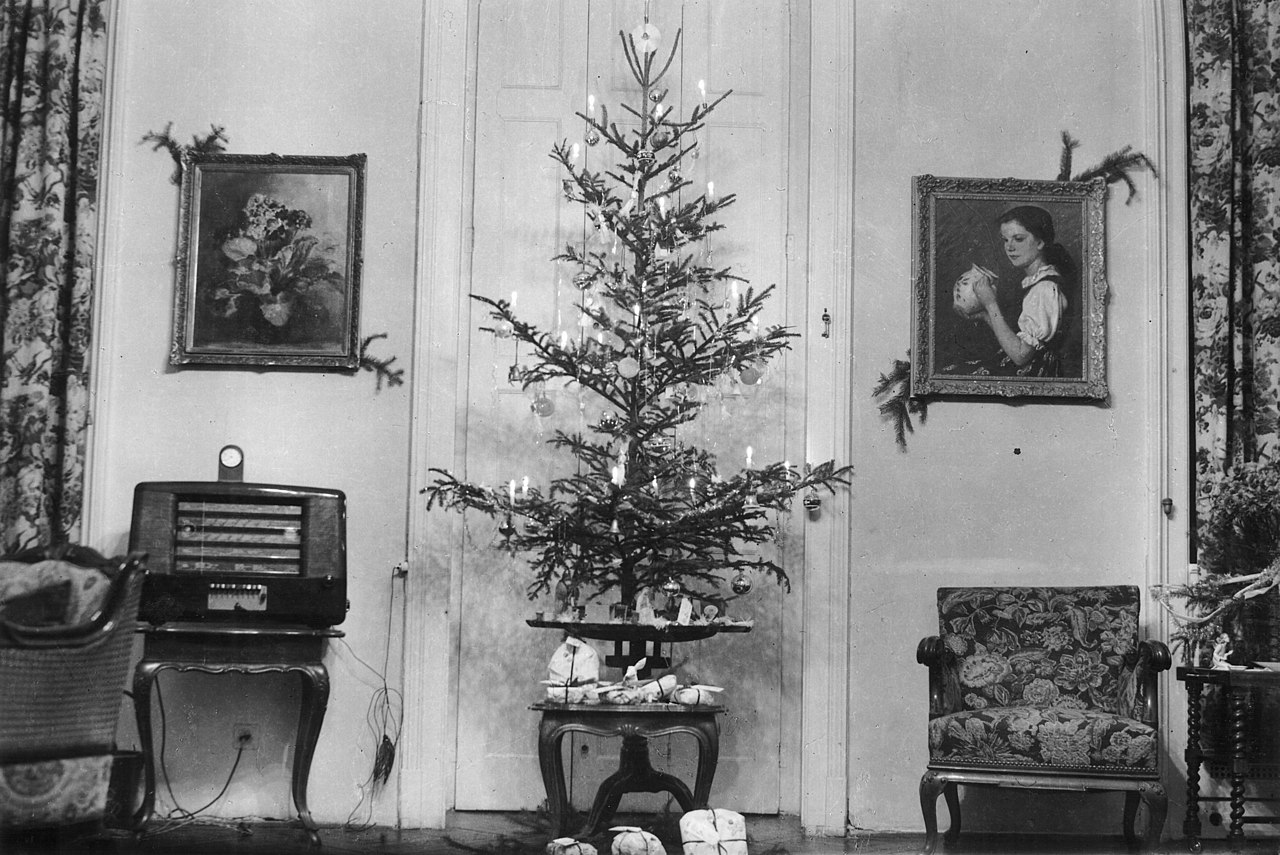 Wikimedia Commons, FOTO:FORTEPAN / Archiv für Zeitgeschichte ETH Zürich / Agnes Hirschi
Wikimedia Commons, FOTO:FORTEPAN / Archiv für Zeitgeschichte ETH Zürich / Agnes Hirschi
29. Environmentally Evergreen
It wasn’t until 1991 that artificial Christmas trees outsold real ones in the US. However, if you think these “artificial” trees are more “green” than cutting down real ones each year, think again. On average, your family needs to use an artificial tree for at least 20 years to have the same ecological footprint as a family that uses real trees.
28. Glad This Didn’t Stick
Teddy Roosevelt, the 26th President of the United States, was such a devoted environmentalist that he banned Christmas trees from the White House in 1901, his first year in office.
27. That’s a Lot of Trees
In the United States, approximately 35 million real trees are sold each Christmas, and these trees grow for about six to eight (and up to 15) years before they are sold.
As a side note, Christmas trees are grown in EVERY state, including Hawaii and Alaska, and there are about 21,000 tree farms in the US overall.
26. Tasty Treats
In case you are looking for another use for your tree, many parts are actually edible, and the needles are considered a good source of Vitamin C.
If that doesn’t appeal to you, some zoos will accept used Christmas trees to feed their animals.
25. I Vote Turkey
The most popular Christmas food is still up for debate. In December, “ham” is a more popular search than “turkey,” according to Google Trends—though turkey tops the charts in November. Based on sales data, Americans bought an astounding 318 million pounds of spiral cut ham in November/December of 2013.
24. Sign Me Up
After the American occupation of Japan following World War II, the Japanese people embraced Christmas (without the religious connotations) as an occasion for gift-giving and celebration. Due to an incredibly successful marketing campaign in the 1970s, KFC became the best-selling restaurant for Christmas dinner throughout the entire country.
In Japan today, you have to order about two months in advance if you want your Christmas to be finger-lickin' good.
23. Cromwell Strikes Again
Nowadays, English mince pies are mostly vegetarian, but in the Victorian era, they were made with beef and spices. Technically, it’s actually illegal to eat these in England on Christmas day. Oliver Cromwell, that swell dictator who banned Christmas in England in the 1600s, also outlawed these pies, as he considered them too gluttonous.
Who needs The Grinch when you have Cromwell to ruin Christmas?
 Wikimedia Commons, christmasstockimages.com Licensing
Wikimedia Commons, christmasstockimages.com Licensing
22. Hidden Messages
“The Twelve Days of Christmas” is the name of a popular Christmas carol, but the lyrics of the song might not mean what you thought they did. The “true love” in the song actually refers to the love of God according to the Catholic Church, and in accepting the gifts, the receiver has accepted the code of that love. Each of the gifts have meaning within this code, such as “two turtledoves,” which symbolize the acceptance of the Old and New Testament.
Side note:
the number of gifts in the Twelve Days of Christmas equals a whopping 364.
21. Time-Out
The saying “Peace on Earth, Goodwill to All Men” rang especially true on Christmas 1914. The First World War had started the previous summer, but the holiday spirit so moved the soldiers on the Western Front that the British and German soldiers laid down their arms in a Christmas truce.
They moved into No Man’s Land and exchanged cigarettes and other small gifts, sung some carols, and even took up a friendly game of soccer.
20. Who You Gunna Call?
When The Santa Clause first came out, a line in the movie has Tim Allen mentioning a phone number 1-800-SPANK-ME. Well, turns out it was a real number.
A grandmother called it at the request of her grandchildren and discovered it was a number for...intimate activities. It took three years for Disney to re-release the film without a mention of that phone line, at which point they also bought and then disconnected the number.
19. The Season of Giving
Boxing Day didn’t get its name because of all the boxes around the house after the gifts get opened the day before. Its origins are less consumerist in nature, as its name refers to all the money that was collected in church alms-boxes due to long-standing custom of donating to charity on the day after Christmas.
 Flickr, Marco Verch Professional Photographer
Flickr, Marco Verch Professional Photographer
18. Jingle All the Way
It’s hard to believe, but the song “Jingle Bells” was first written as a Thanksgiving song. It was performed in 1857 by James Lord Pierpont in Savannah, Georgia at a church Thanksgiving concert and was originally called “The One Horse Open Sleigh”. The song is also an-out-of-this-world historic first—it was the first song broadcast from space!
17. It Ain’t Easy Being Green
In the live-action version of How the Grinch Stole Christmas, Jim Carrey went through quite a lot to be the Grinch. It took hours to get him in his makeup every morning and another hour to take it all off at the end of the day.
He even had to learn techniques from a Navy SEAL who specialized in preparing agents for the possibility of enduring torture because of how intolerable it was being in the prosthetics all day.
And those yellow eyes the Grinch has? Some of that was Carrey wearing contacts, but other times it was just edited in after the fact.
The contacts were just too uncomfortable for the actor to be constantly wearing, so he needed those breaks.
16. Great Gift
As a symbol of thanks for the assistance England provided during WWII, the people of Oslo, Norway provide the Christmas tree for Trafalgar Square in London every year.
15. Lady Liberty
The French also outdid themselves with what could be called the largest Christmas gift ever–The Statue of Liberty–which they gave to America on Christmas Day in 1886.
14. The Mystery of the Voices
Frosty the Snowman first premiered in December 1969. But when those tuning in the following year watched it, pretty much all of the children’s voices had been dubbed over by completely new people. The reasoning is unknown, and every single airing since then has been with the dubbed version.
No one even knows who those new voice actors were either, as they weren’t identified.
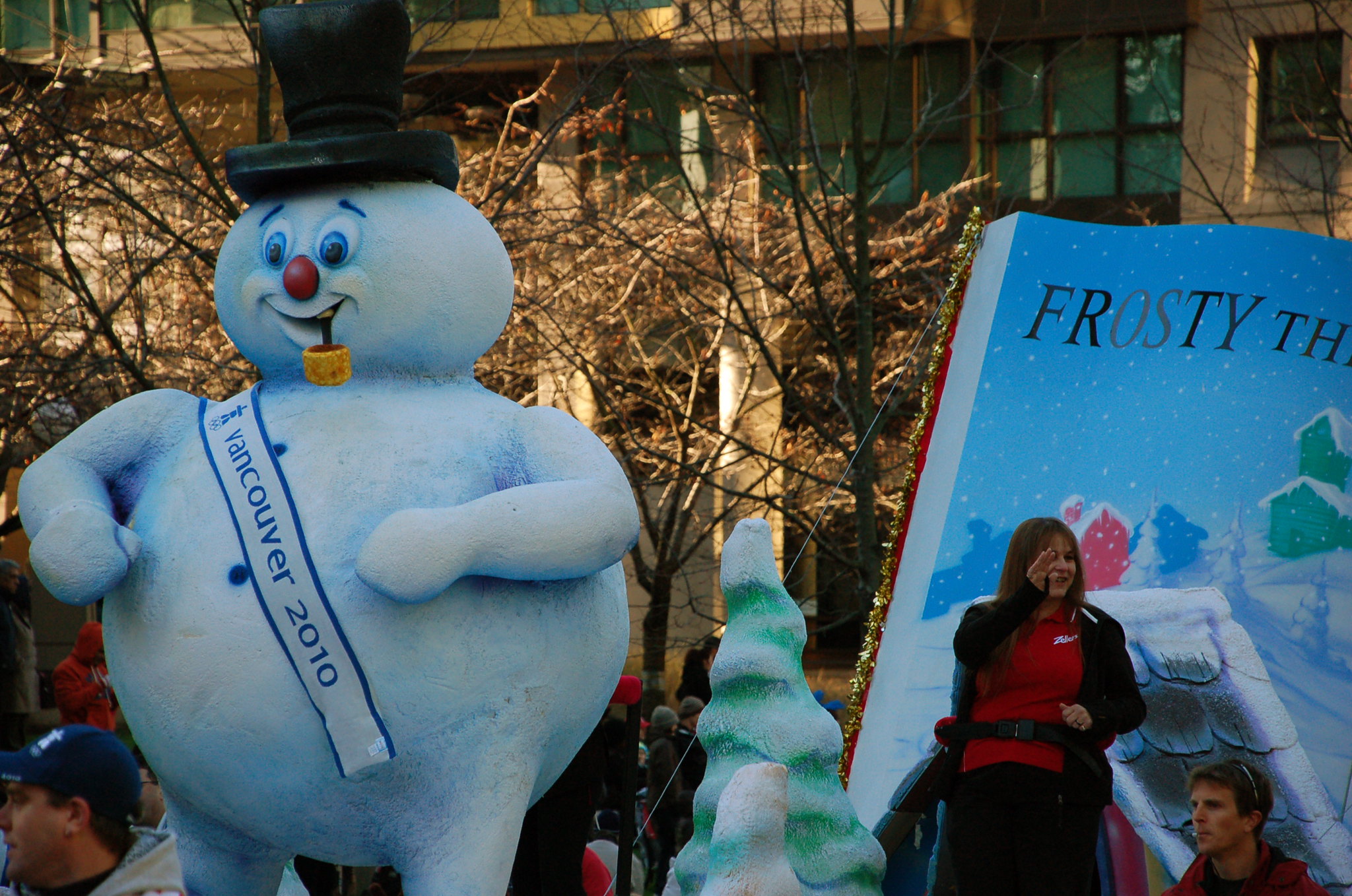 Flickr, Derek K. Miller (1969-2011)
Flickr, Derek K. Miller (1969-2011)
13. If This Doesn’t Get You in The Spirit, Nothing Will
For more than half a century, The Revolutionary Armed Forces of Colombia (or FARC) fought against the Columbian government in the longest-running war in the Western hemisphere. In 2010, the government launched “Operation Christmas”. At great risk, Black Hawk helicopters carried two Christmas tree decorators—led by Colombian Special Forces—into rebel territory, where they found nine, 75-foot trees near rebel strongholds, and decorated them with Christmas lights.
They also rigged each tree with motion detectors so that the trees lit up when the rebels walked by at night.
A lit-up sign read, “If Christmas can come to the jungle, you can come home. Demobilize. At Christmas, everything is possible”. 331 rebels—roughly five percent of the entire rebel force at the time—came out of the jungle and laid down their arms.
12. Father “Odin”
Yes, Santa is technically based on St.
Nikolas of Myra. But the links go even further back in history. We base our image of Santa Claus on the Norse pagan god Odin. Think about it. Both are older men with his chubby cheeks and majestic white beards.
11. The Real Deal
Natalie Wood was eight years old when she starred in Miracle on 34th Street, and she believed that her co-star Edmund Gwenn was actually the real Santa Claus.
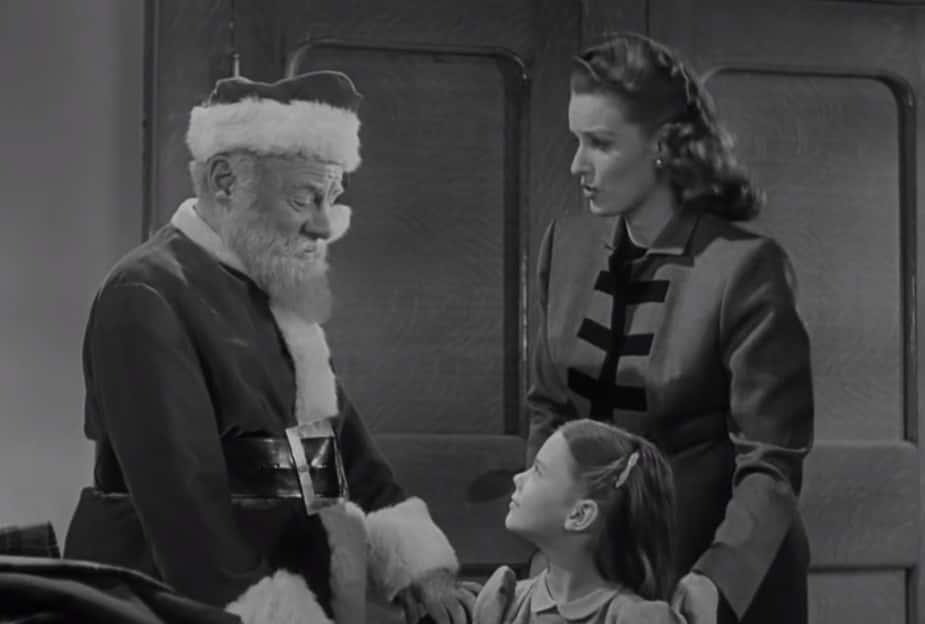 Miracle on 34th Street (1947), 20th Century Fox
Miracle on 34th Street (1947), 20th Century Fox
10. The Pooping Nativity Scene Figure
Nativity scenes seem like a pretty standard Christmas tradition, but in Catalonia they’re a little… different. Specifically, they feature a character called a caganer. There’s no good way to say this: caganer means “defecator,” and in the scenes they’re squatting, with their pants down, with a pile of poop on the ground beneath them. Seriously.
9. The Christmas Log That Poops Presents
Tió de Nadal roughly means “Christmas Log” in Catalan, which sounds innocent enough, but that’s until you find out what it does. Catalan families “feed” the log over the weeks before Christmas, before placing it in the fireplace and bashing it with a stick, commanding it to poop out presents and not to poop out a stinky herring.
8. Ouch
Carol Kane, who played the Ghost of Christmas Present in Scrooged, grabbed star Bill Murray’s lip so hard that she actually injured him, which stalled filming for several days.
 Flickr, John Mathew Smith & www.celebrity-photos.com
Flickr, John Mathew Smith & www.celebrity-photos.com
7. Hide Your Brooms
The people of Norway believe in Christmas witches, just like many other European people.
People thought that witches and other evil spirits came out on Christmas Eve and that they would try to steal brooms to ride around on in the night. So even today, Norwegians hide their brooms away on Christmas Eve to ward off the witches.
6. Mulled Drinks
During the winter, Anglo Saxon pagans drank a concoction of mulled ale, curdled creams, eggs, spices, sugar, and apples in the name of good health, or “waes hael” (hence, wassail). Over the years, these traditional drinks morphed into eggnog and mulled wine drinks.
So if you think of it, in a way, even something like the Starbucks Eggnog Latte kind of has pagan origins…
5. Ain’t No High Like a Sugar High
While filming Elf, Will Ferrell suffered numerous headaches from the amount of candy he had to eat.
4. Nothing’s More Delicious Than a Witch’s Home
Gingerbread has been a Christmas tradition for centuries, but the building of gingerbread houses started becoming popular right around the time that the Brothers Grimm published the story of Hansel and Gretel.
People would build gingerbread houses just like the house in the story. Except that house belonged to a witch that ate little children. Not so appetizing.
3. Where Do We Begin?
December 25 is supposedly the day of the birth of Jesus, but there’s actually no mention of this day in the Bible. Religious historians believe Jesus was probably born in the spring.
One theory is that the date was set to coincide with the ancient pagan festival of Saturnalia, which celebrated agricultural abundance with gift-giving, parties, and gambling.
It actually wasn’t until the year 350 AD that Pope Julius I declared December 25 as the official birthday of Christ.
2. X-Rated
In the 1950s, church leaders in Boston tried to have the song “I Saw Mommy Kissing Santa Claus” banned because they thought the song was suggesting inappropriate behavior. The singer, Jimmy Boyd, actually flew to Boston to try and explain why the lyrics weren’t actually indecent.
 Freepik,master1305
Freepik,master1305
1. And in America too?
From 1659 to 1681, Puritan leaders in Boston actually made it illegal to celebrate Christmas at all.
If you were caught participating in the festivities, you would actually be fined 5 shillings.




